A well-designed landing page is a fundamental component of any successful online marketing campaign.
Serving as the virtual doorway to your business, it's the initial point of contact for potential customers.
A carefully crafted landing page with compelling content, persuasive calls-to-action (CTAs), and eye-catching visuals has the power to transform visitors into valuable leads or loyal customers.
It provides a focused and optimised experience, maximising the chances of conversions and driving tangible results for your business.
By investing time and effort into creating a compelling landing page, you establish a solid foundation for your marketing campaigns.
It sets the tone for the visitor's journey, communicates the value of your offering, and builds trust and credibility.
Let's dive into the elements of an effective landing page.
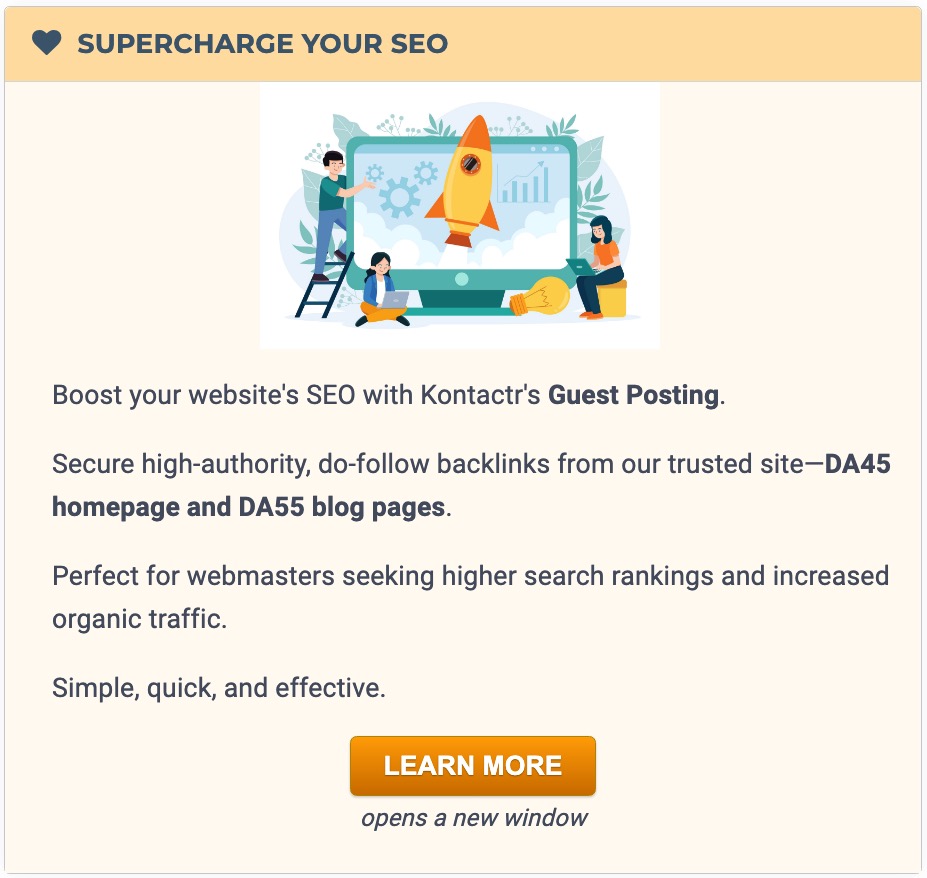
1. Keyword Research and Segmentation
Before creating your landing page, it's crucial to understand your target audience's intent.
Doing this allows you to tailor your landing page to address effectively their needs and expectations.
This process involves conducting comprehensive keyword research and employing segmentation techniques.
Keyword research is the foundation for optimising your landing page content.
By identifying specific keywords and phrases that resonate with your target audience, you ensure that your landing page appears prominently in relevant search engine results.
An online fitness coaching service, for example, might discover that keywords like:
personal training programmes
weight loss tips
and
healthy meal plans
are commonly searched by its target audience.
Integrating these keywords strategically throughout the landing page's copy will help attract the right visitors and increase the likelihood of conversions.
Segmentation takes the process a step further by categorising your audience based on specific criteria such as demographics, interests, or behaviour.
By segmenting your audience, you can tailor different versions of your landing page to distinct user groups.
For example, if you offer both yoga classes and strength-training programmes, you can create separate landing pages targeting individuals interested in each discipline.
This approach allows you to deliver a more personalised and relevant experience, enhancing the chances of engagement and conversion.
2. Writing Copy and Crafting CTAs
Engaging and persuasive content lies at the core of a successful landing page.
It's important to understand the significance of copywriting and useful to consider some practical guidance on creating captivating headlines, persuasive body text, and effective calls-to-action (CTAs).
Implementing these techniques can help to capture your audience's attention, address their pain points, and guide them towards taking the desired action.
When crafting your landing page's copy, it's essential to focus on compelling headlines that grab attention and entice visitors to explore further.
For instance, if you're promoting a digital marketing course, a headline like:
Unlock the Secrets to Digital Marketing Success
immediately piques curiosity and highlights the value you offer.
The body text should engage readers by addressing their pain points and clearly conveying the benefits of your product or service.
Use persuasive language and storytelling techniques to build an emotional connection with your audience.
For instance, if you're selling a productivity app, you can share a relatable story about how the app transformed someone's work-life balance, emphasising the positive impact it can have.
Effective calls-to-action (CTAs) play a crucial role in driving conversions.

Call To Action Example
Be clear, concise, and action-oriented in your CTAs, guiding visitors towards the desired action.
Use compelling phrases such as:
Start Your Free Trial Today
or
Get Instant Access Now
to create a sense of urgency and motivate visitors to take the next step.
3. Creating Visual Appeal and Enhancing User Experience
The visual appeal and user experience of your landing page play a pivotal role in maximising its conversion rate.
We can look here at some key design elements that contribute to a visually appealing and user-friendly landing page.
By implementing best practices for layout, colour schemes, typography, imagery, and responsive and accessible design, you can create an aesthetically pleasing and seamless browsing experience that captures visitor attention.
Strive for a clean and organised layout that guides visitors' attention to the most important elements of your page.

Clear and intuitive navigation ensures that users can easily find what they're looking for, reducing bounce rates and increasing engagement.
Placing your primary call-to-action (CTA) prominently above the fold, along with concise and compelling copy, can encourage visitors to take immediate action.
Colour schemes and typography also play a crucial role in conveying your brand's personality and creating visual harmony.
Choose colours that align with your brand identity and evoke the desired emotions.
Use warm tones for a sense of energy and urgency or cool tones for a calming effect.
Select fonts that are easy to read and reflect your brand's tone, whether it's professional, playful, or elegant.
High-quality imagery can make a significant impact on the overall visual appeal of your landing page.
Use relevant and compelling visuals, such as product images, captivating photographs or engaging graphics, to enhance the message and capture attention.
Optimise image sizes and formats to ensure fast loading times and a smooth browsing experience.
Lastly, don't forget about responsive and accessible design.
With the increasing use of mobile devices, it's essential that your landing page is optimised for different screen sizes and resolutions.
Responsive and accessible design ensures that your page adapts seamlessly to mobile, tablet, and desktop devices, providing a consistent and user-friendly experience across all platforms and with a range of assistive technologies.
This ensures that you maximise your site's addressable audience.
4. A/B Testing and Optimization
A/B testing is an invaluable technique for optimising the performance of your landing page.
Following is an outline of the process of setting up A/B tests, interpreting the results, and implementing data-driven changes.
By continuously testing and refining your landing page, you can unlock its full potential and maximise conversions.
To begin, identify specific elements of your landing page that you want to test, such as headline variations, CTA buttons or layout modifications.
You might create two versions of your headline -- one that emphasises a product's features and another that highlights its benefits.
By directing equal traffic to each version and measuring the conversion rates, you can determine which approach resonates better with your audience.

When analysing the results, look beyond the surface-level metrics and delve deeper into user behaviour.
Consider factors such as click-through rates, time spent on page, and bounce rates to gain a more rounded understanding of how each variation performs.
You can conduct analysis to determine whether the observed differences are statistically significant and make informed decisions based on the data.
Based on the insights gathered from A/B tests, implement changes to your landing page to optimise its performance.
For example, if you discover that a specific CTA button colour generates higher click-through rates, apply that change to the main version of your landing page.
Continuously monitor the impact of these changes and be open to further iterations and refinements.
By embracing A/B testing and leveraging data-driven insights, you can continuously improve your landing page's effectiveness in driving conversions.
This iterative approach allows you to make informed decisions and refine your page based on real user feedback, ultimately maximising your conversion rates and achieving your marketing goals.
5. Best Practices for Maximising Conversions
Starting with a list of proven best practices can empower you to create landing pages that consistently yield high conversion rates.
By incorporating these strategies, you can enhance the overall effectiveness of your landing page and maximise your chances of converting visitors into valuable leads or customers.
Building trust is paramount when it comes to creating a high-converting landing page.
Consider displaying trust indicators such as customer testimonials, client logos, or security badges to instill confidence in visitors.
These elements reassure potential customers that your business is reputable and trustworthy, encouraging them to take the desired action.
Incorporate social proof elements such as:
- user reviews,
- case studies,
- and success stories
to demonstrate the positive experiences of others who have engaged with your product or service.
This is another powerful tool for boosting conversions.
When visitors see that others have benefited from what you offer, they are more likely to trust your brand and follow suit.
Reducing friction throughout the conversion process is crucial.
Streamline your forms by keeping them concise and asking for only essential information.
Implement a clear and intuitive navigation structure that allows visitors to find easily what they are looking for.
By minimising the steps and obstacles between arrival and conversion, you increase the likelihood of visitors completing the desired action.
Optimising load times is vital for providing a seamless user experience and preventing potential customers from abandoning your page.

Compress images, leverage browser caching, and minimise scripts to ensure fast-loading pages.
A slow-loading landing page can significantly impact your bounce rates and hinder conversion rates, so prioritising speed is paramount.
By implementing these best practices, you can create high-converting landing pages that instill trust, leverage social proof, reduce friction, and provide a seamless browsing experience.
The cumulative effect of these strategies will enhance your landing page's overall effectiveness, resulting in increased conversion rates and improved marketing success.
A well-designed landing page is critical to maximising conversions and achieving marketing success.
With a compelling landing page, you can capture visitors' attention, address their needs, and guide them towards desired actions.
It is important to consider essential aspects of creating an effective landing page, including understanding user intent through keyword research and segmentation, crafting engaging content and persuasive CTAs, incorporating design elements for visual appeal and user experience, and leveraging A/B testing for optimization.
By implementing best practices such as building trust, utilising social proof, reducing friction, and optimising load times, you can create high-converting landing pages that consistently yield positive results.
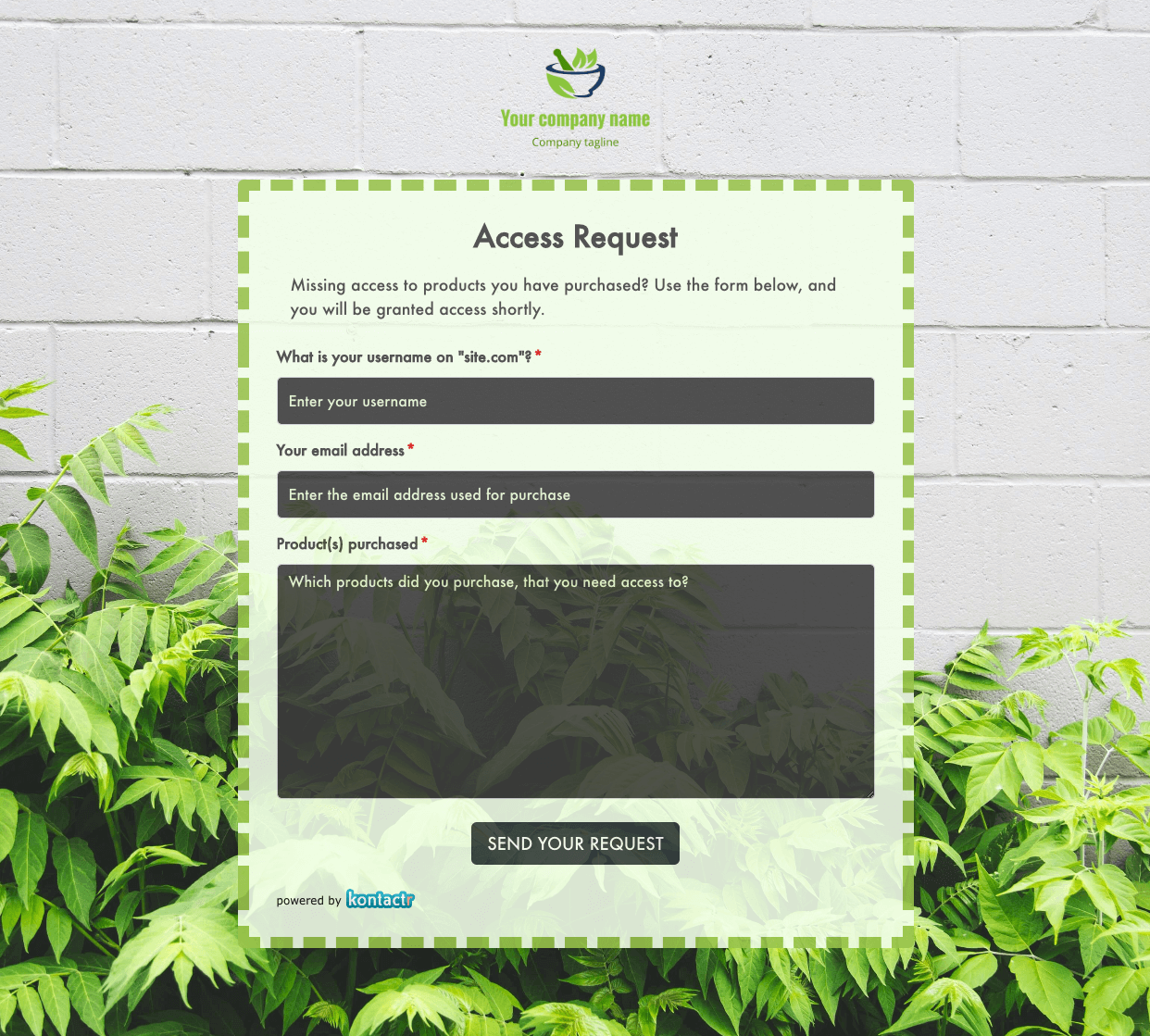 Access Request Form
Access Request Form
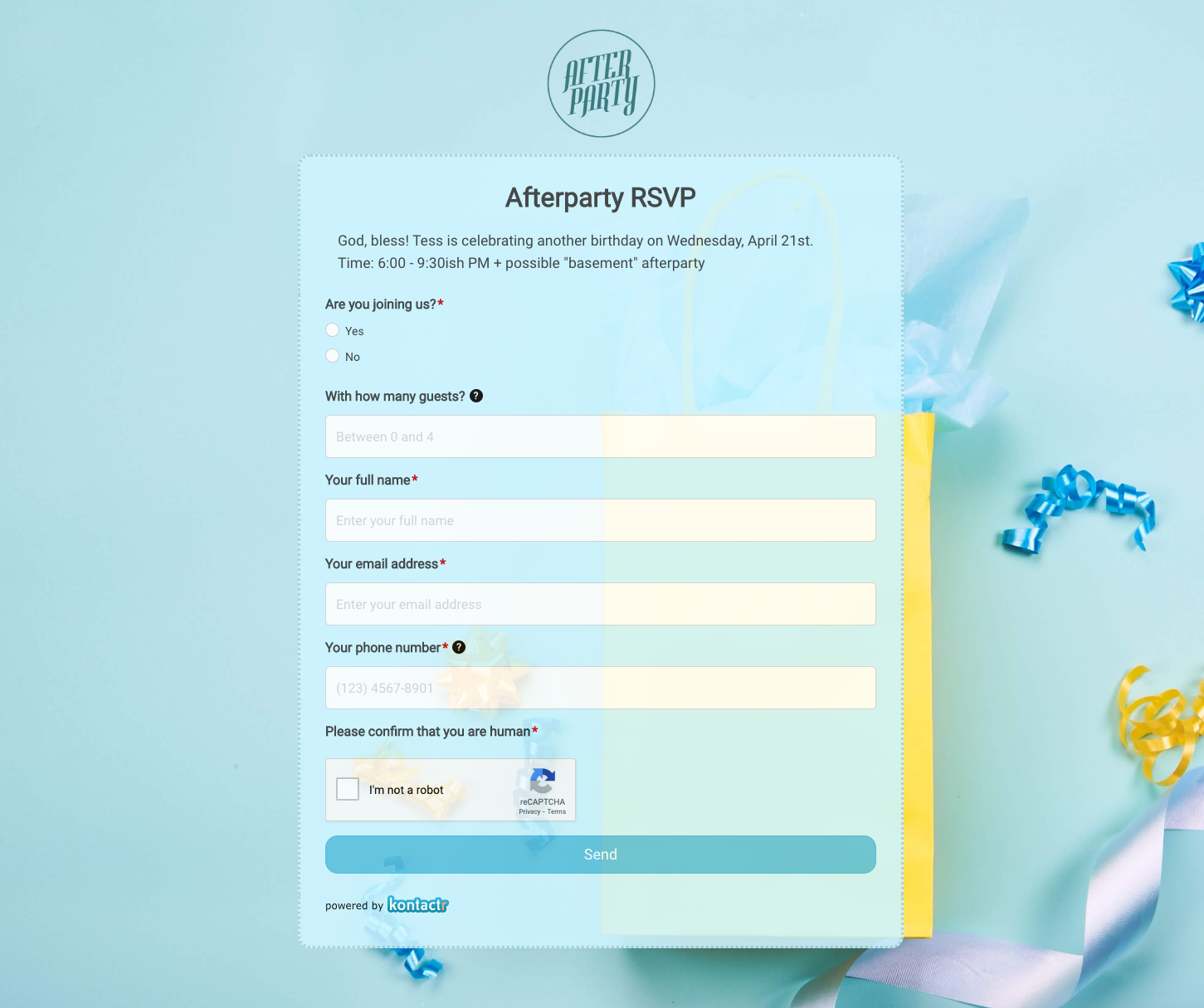 Afterparty RSVP Form
Afterparty RSVP Form
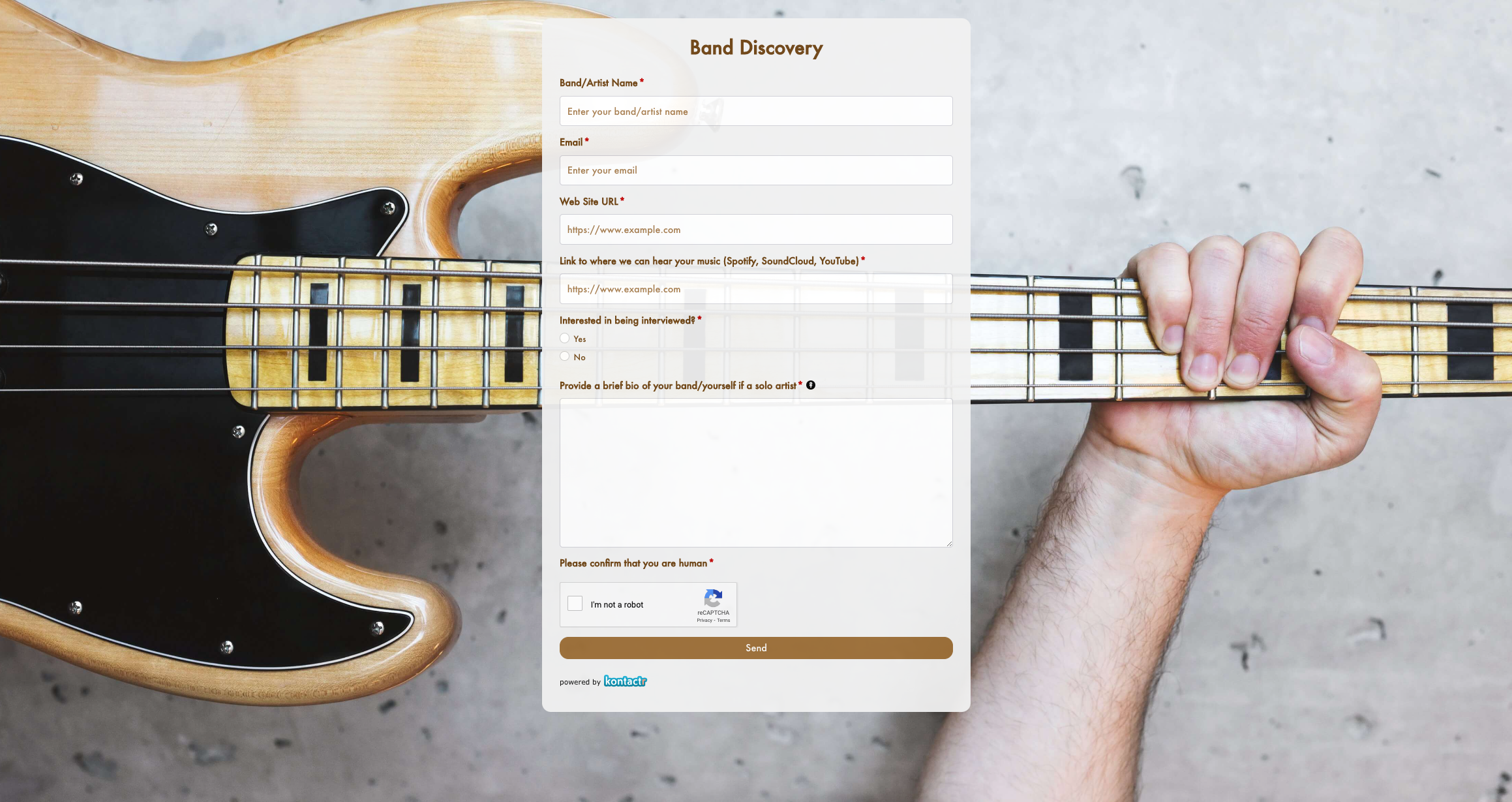 Band Discovery Form
Band Discovery Form
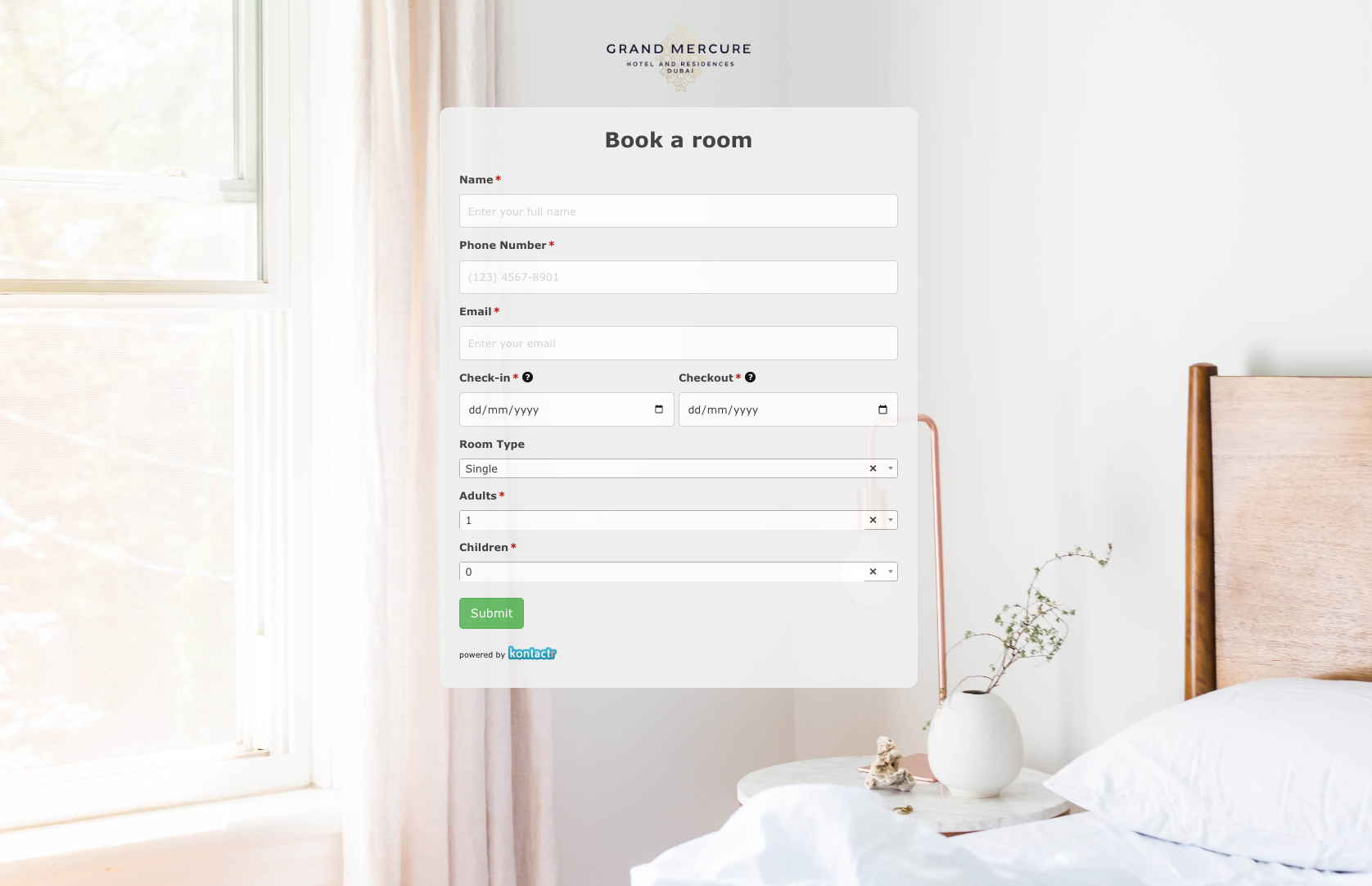 Book a room Form
Book a room Form
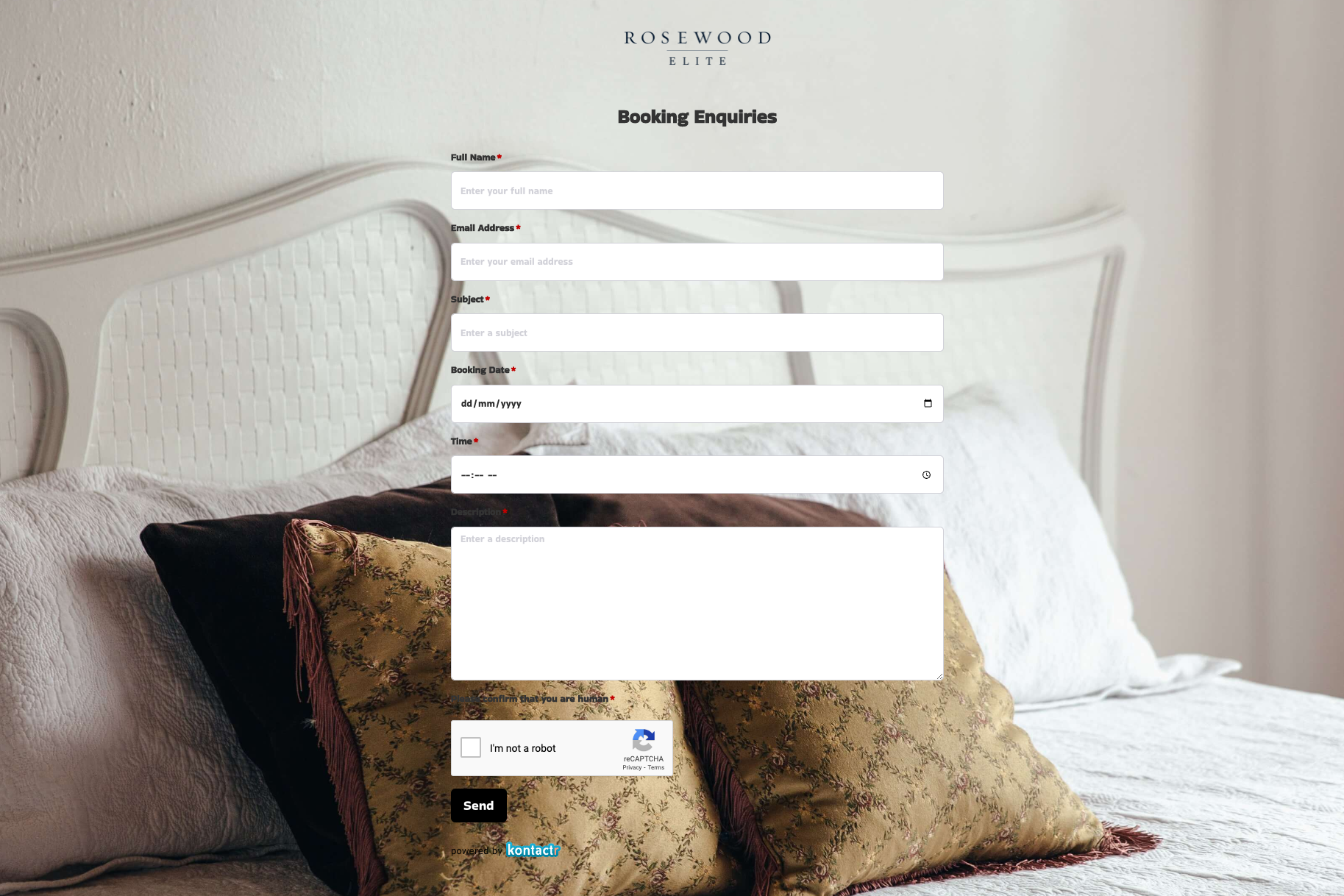 Booking Enquiries Form
Booking Enquiries Form
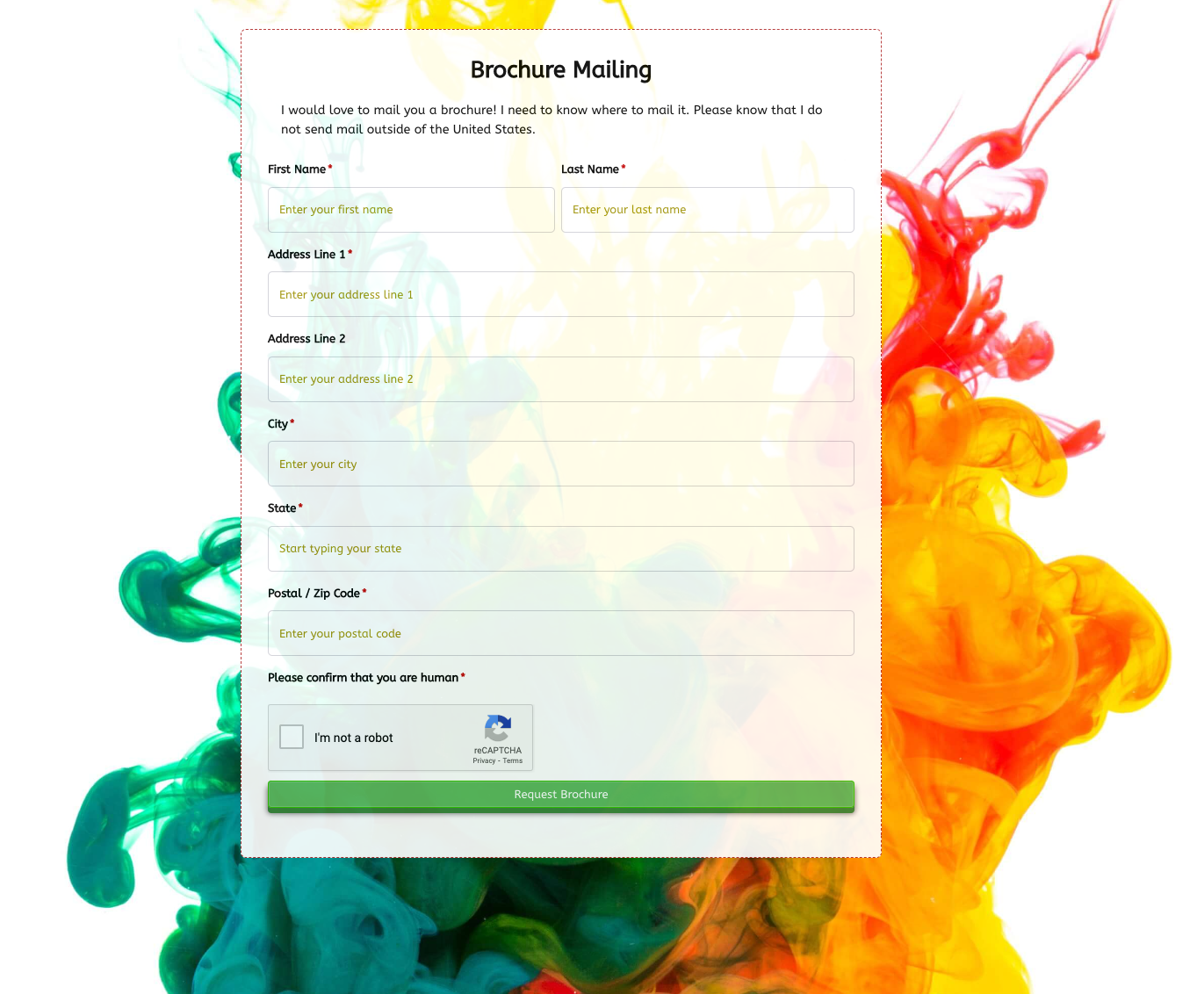 Brochure Mailing Form
Brochure Mailing Form
 Buy a Home Form
Buy a Home Form
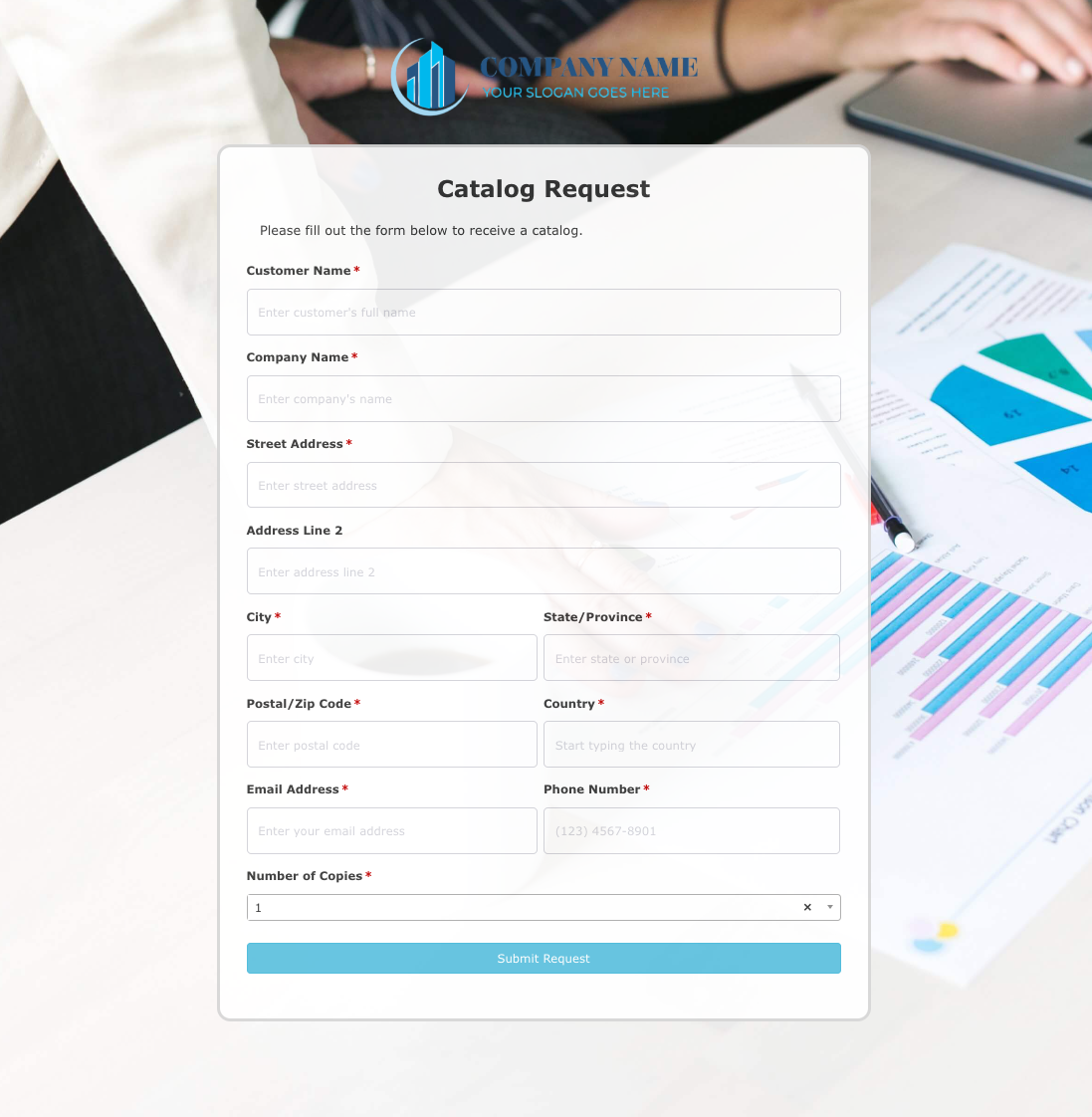 Catalog Request Form
Catalog Request Form
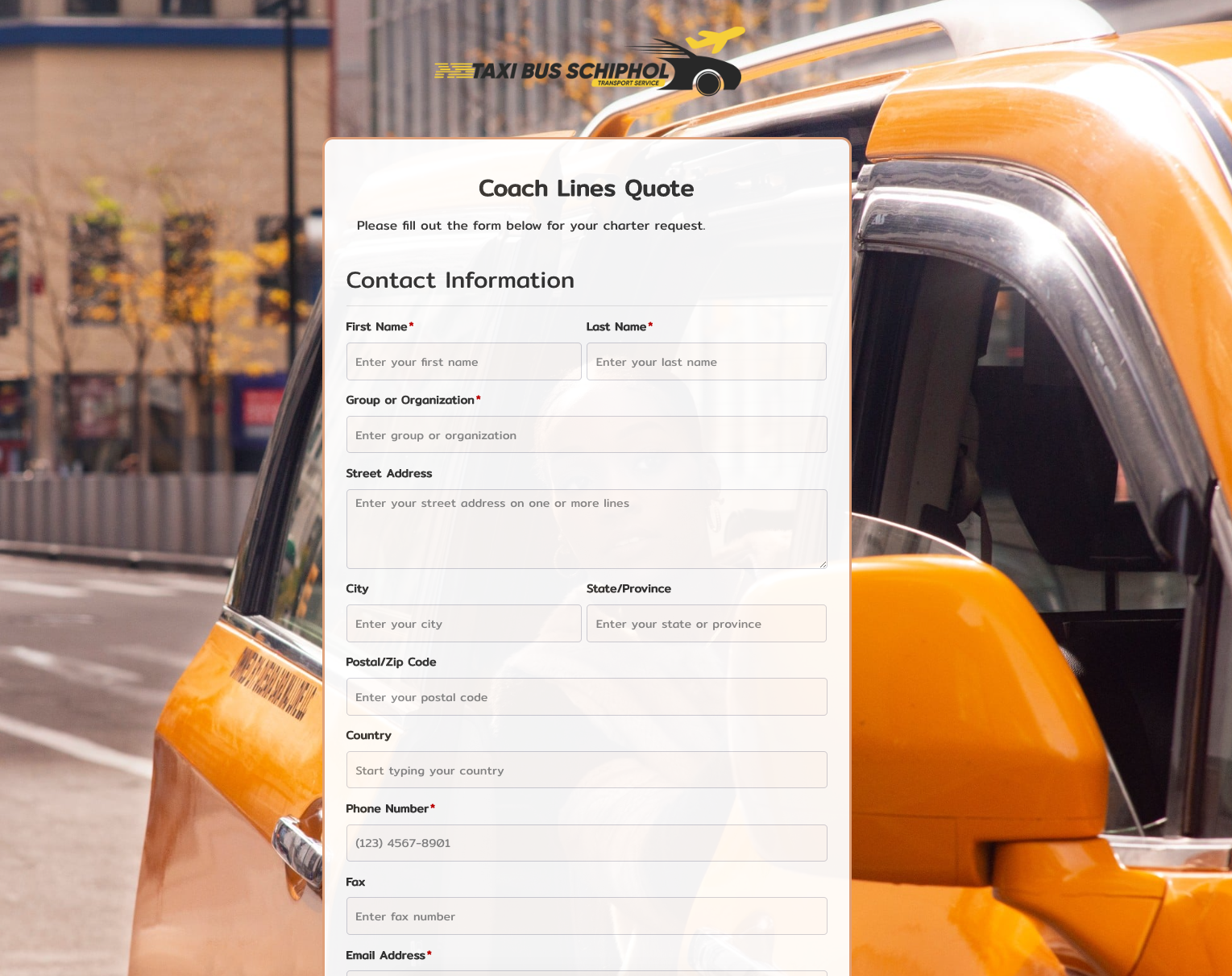 Coach Lines Quote Form
Coach Lines Quote Form
 Contact Us Form
Contact Us Form
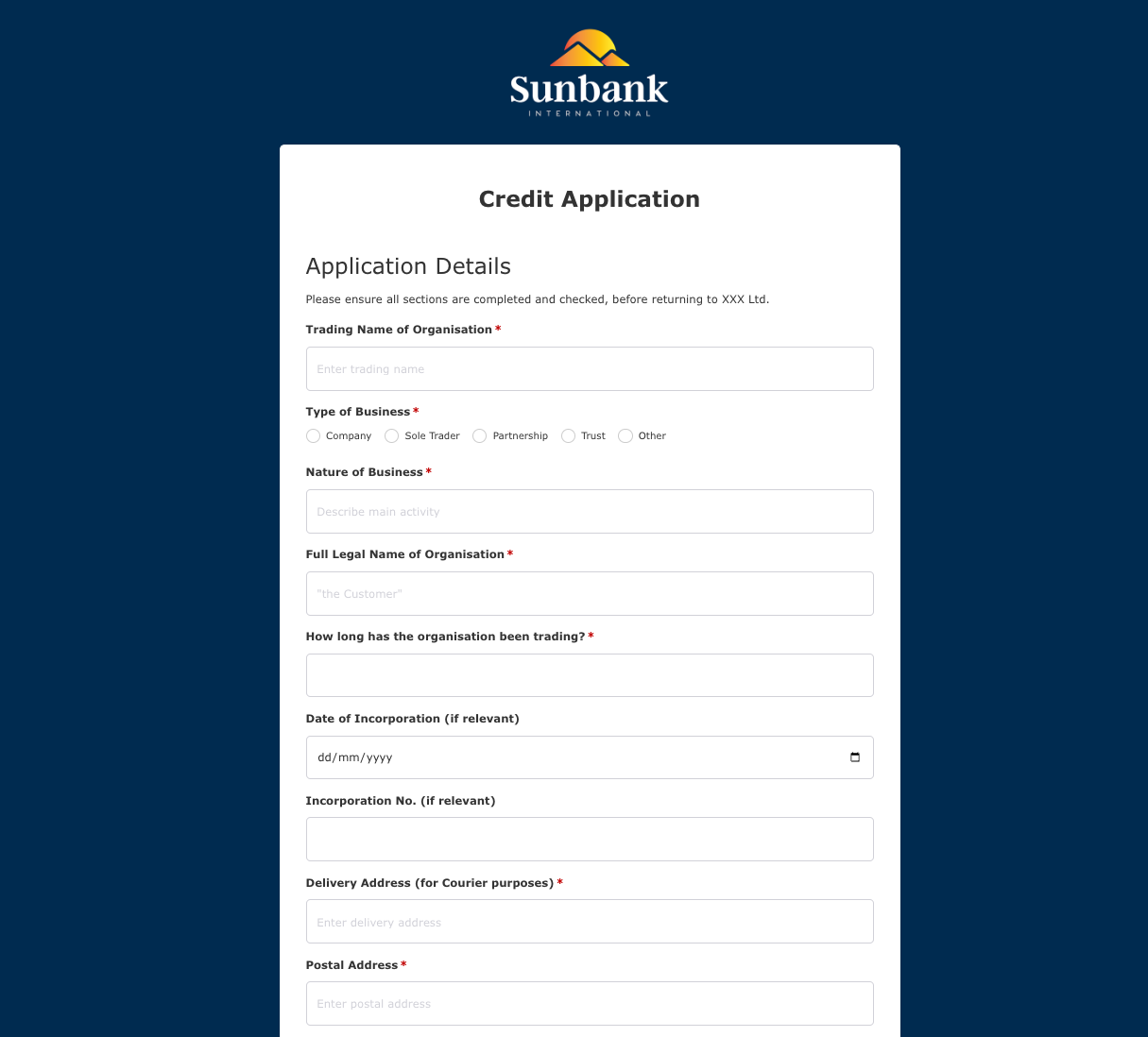 Credit Application Form
Credit Application Form
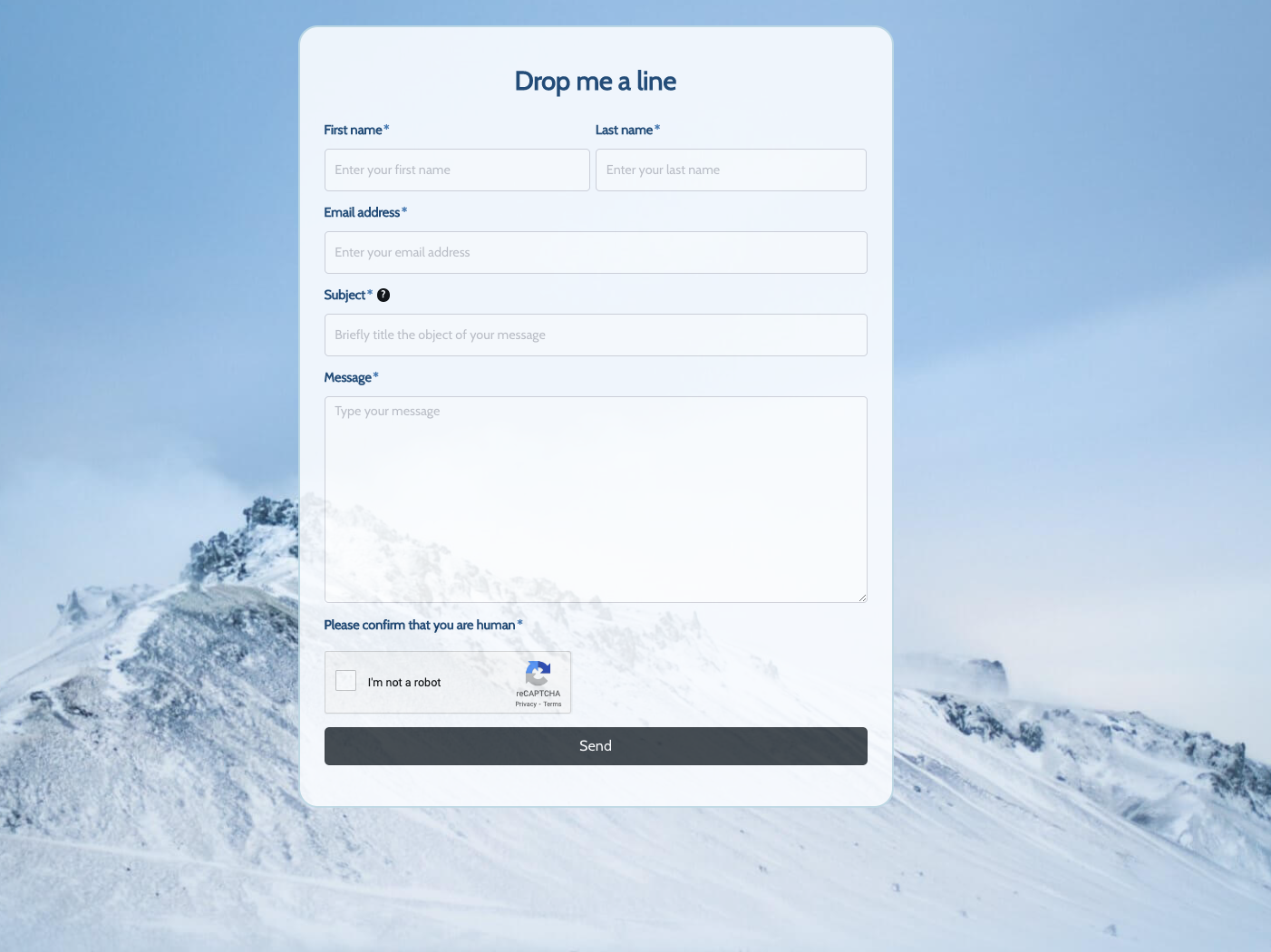 Drop me a line Form
Drop me a line Form
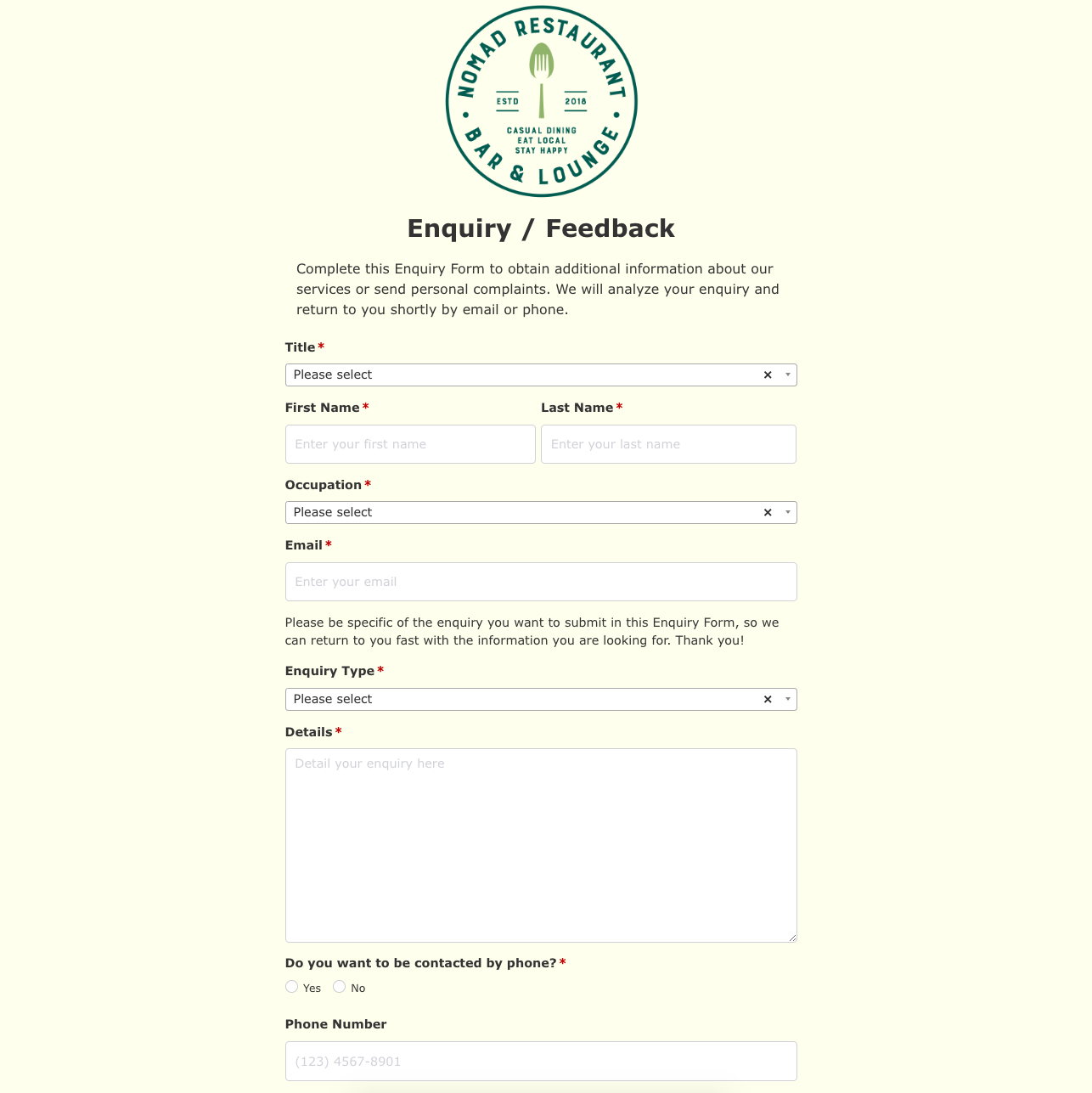 Enquiry / Feedback Form
Enquiry / Feedback Form
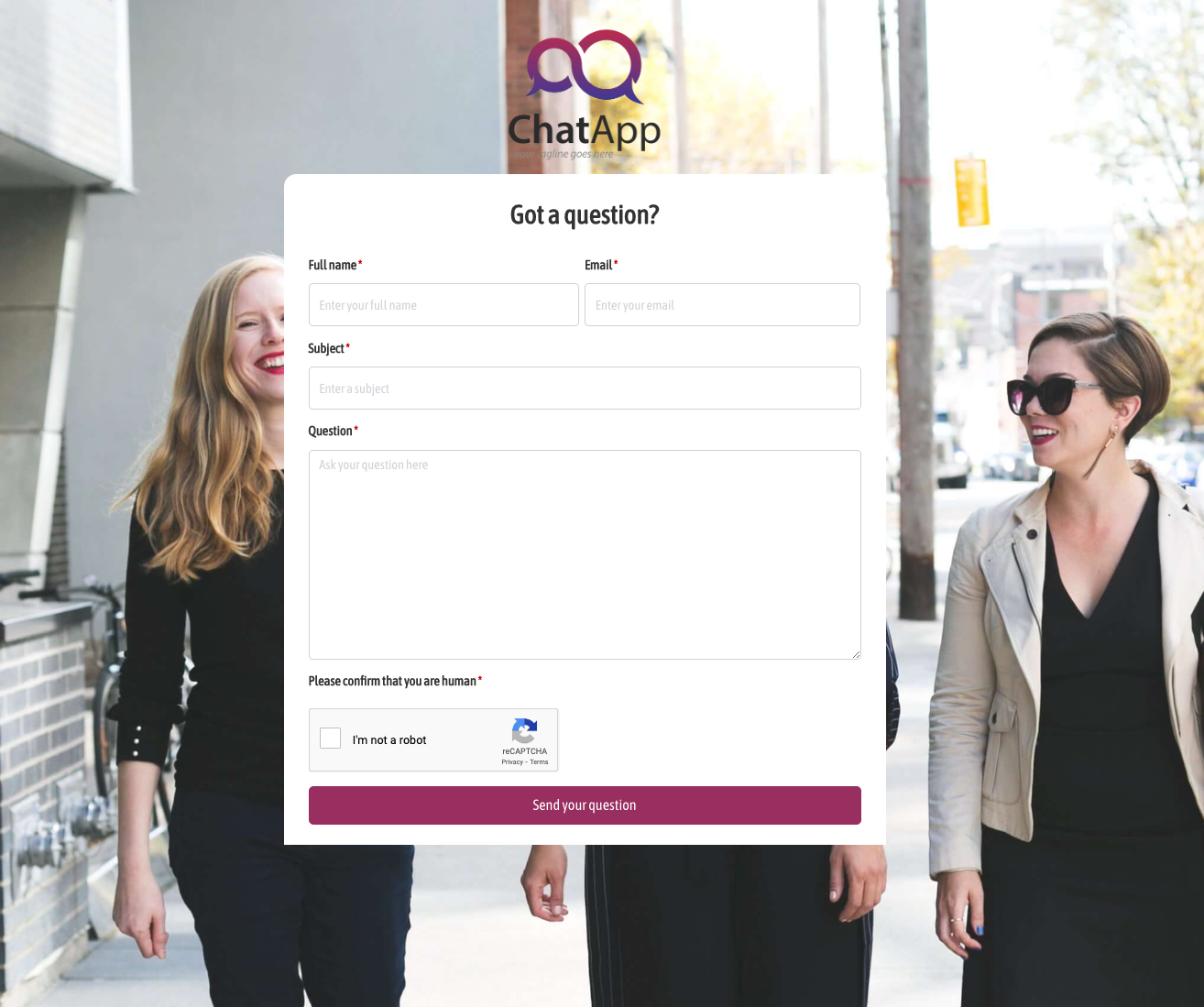 Got a question? Form
Got a question? Form
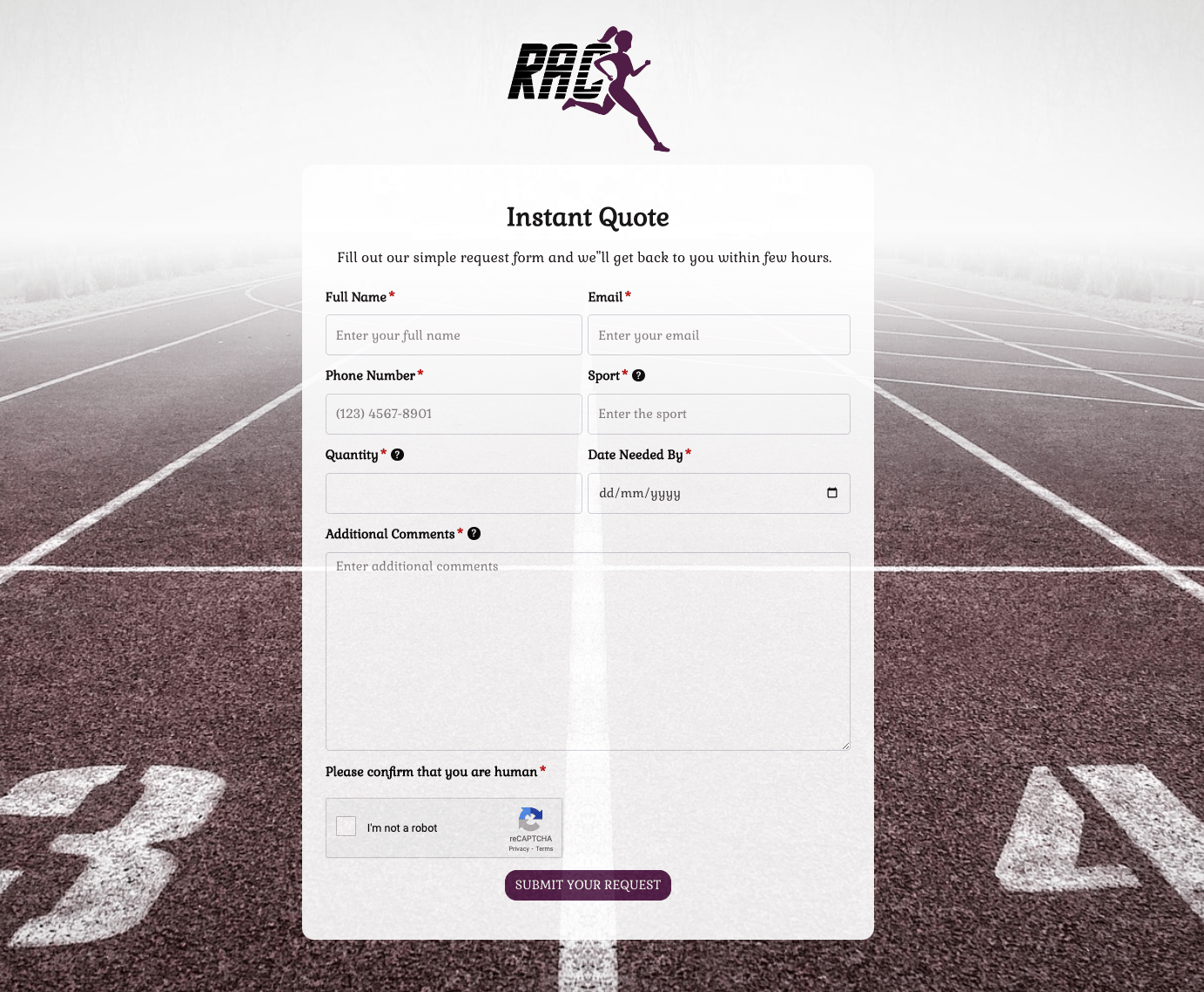 Instant Quote Form
Instant Quote Form
 Job Application Form
Job Application Form
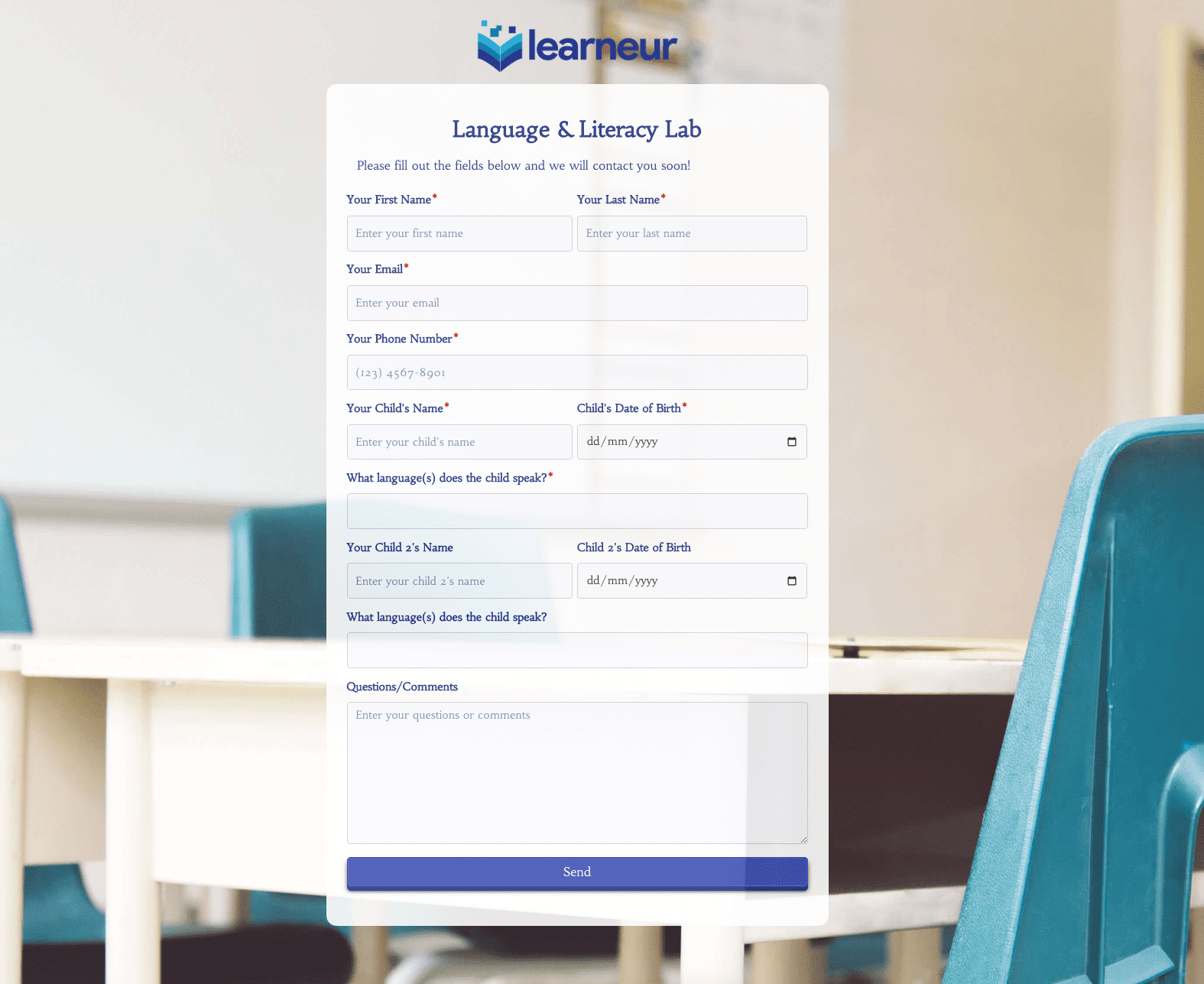 Language & Literacy Lab Form
Language & Literacy Lab Form
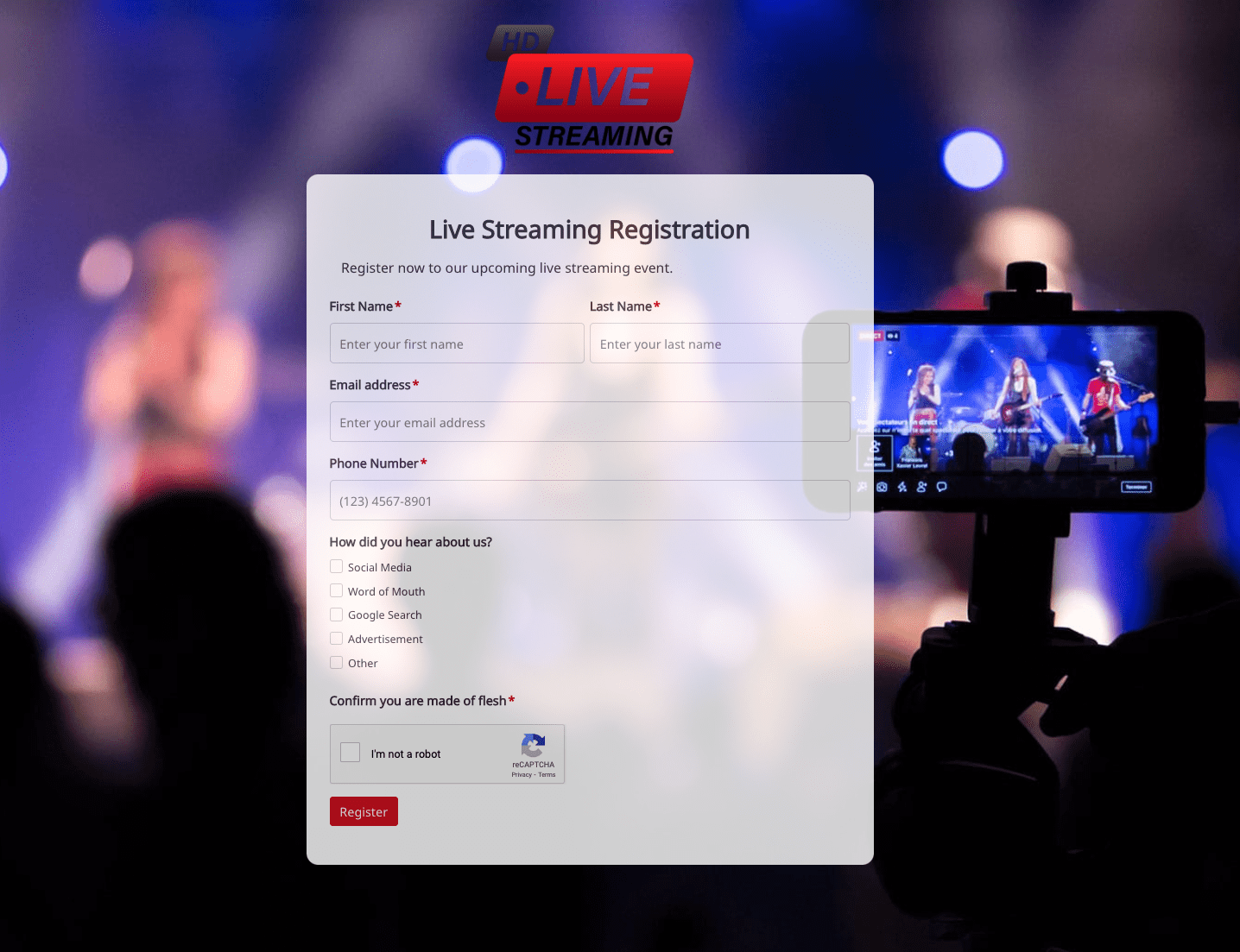 Live Streaming Registration Form
Live Streaming Registration Form
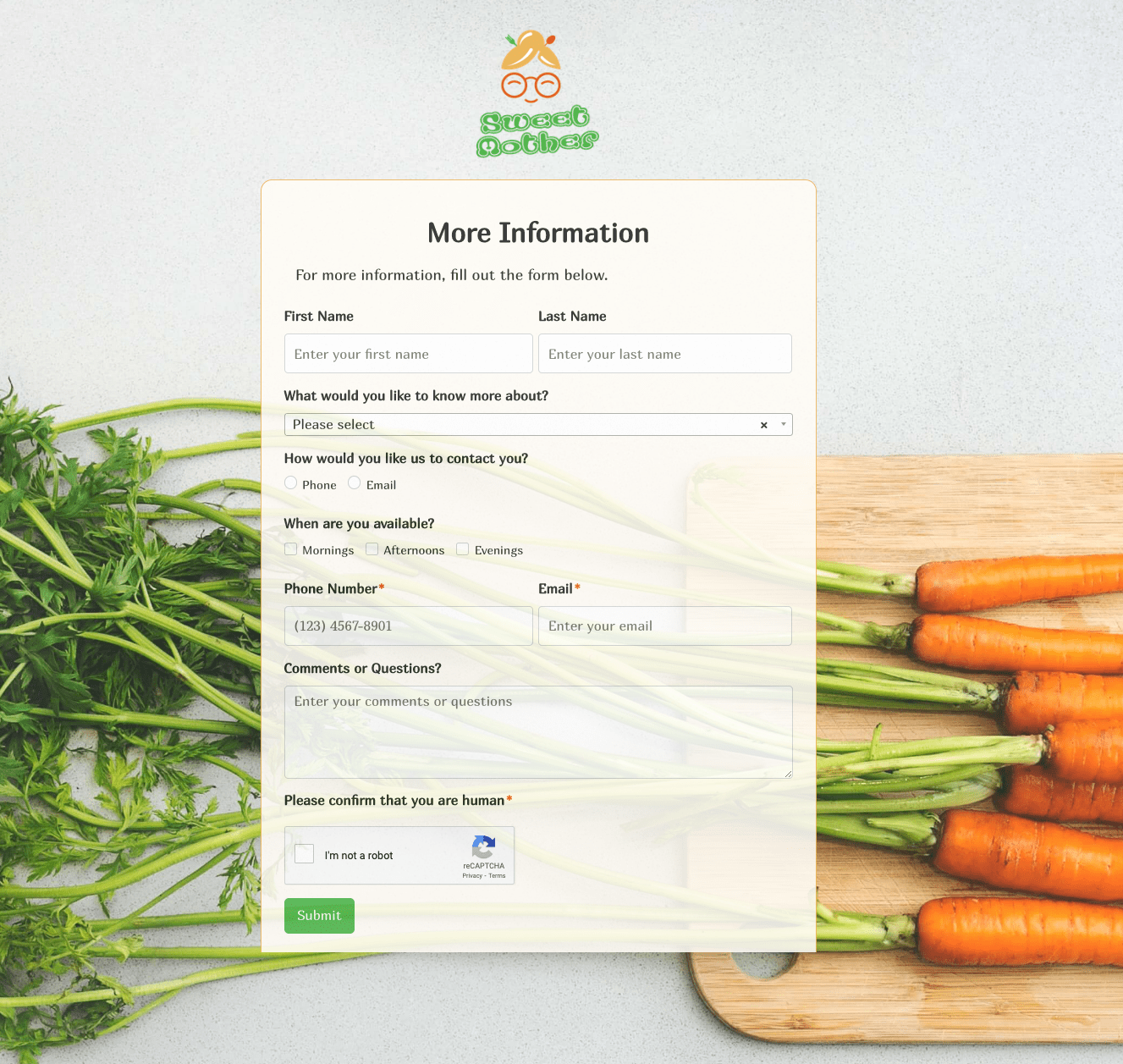 More Information Form
More Information Form
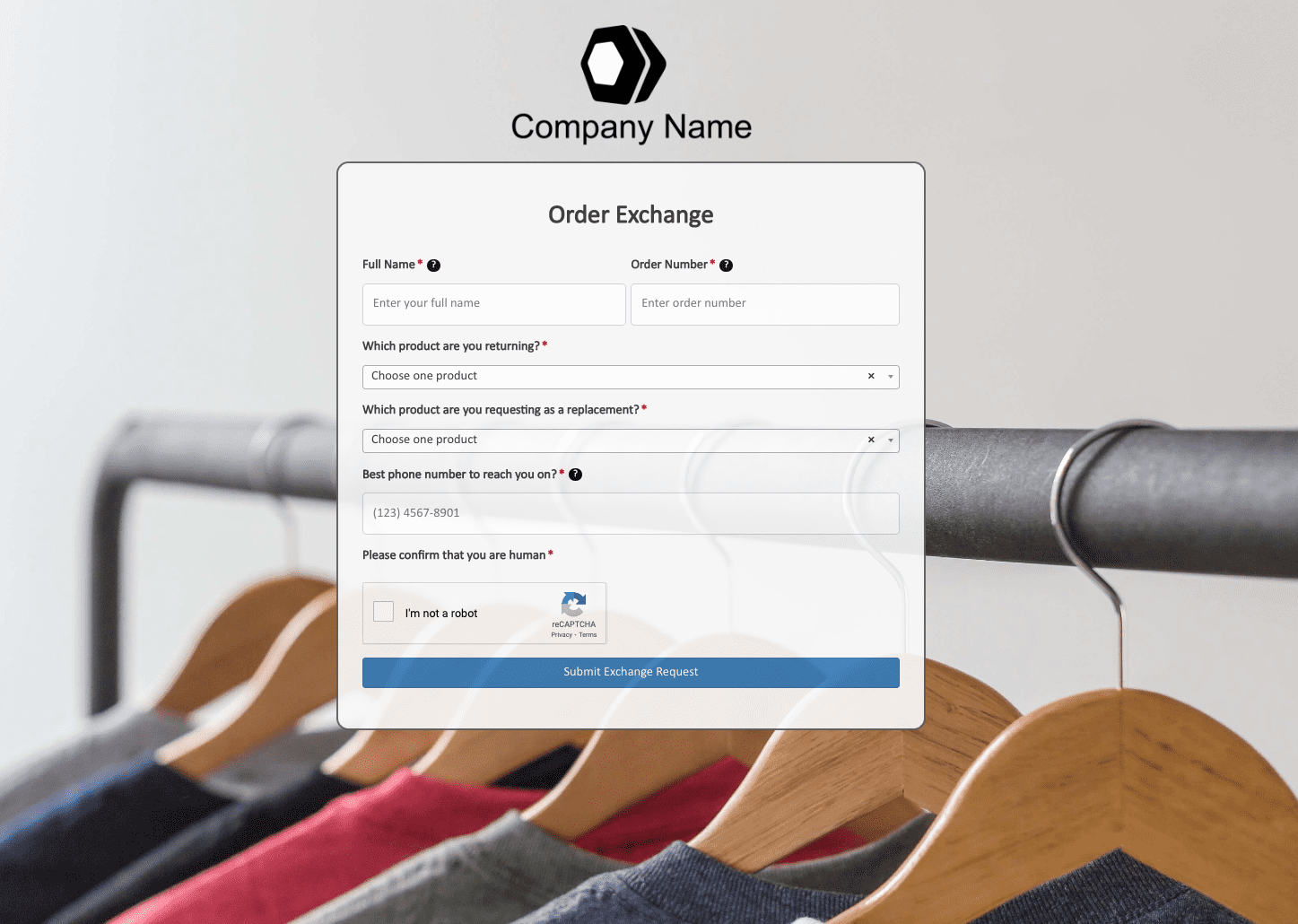 Order Exchange Form
Order Exchange Form
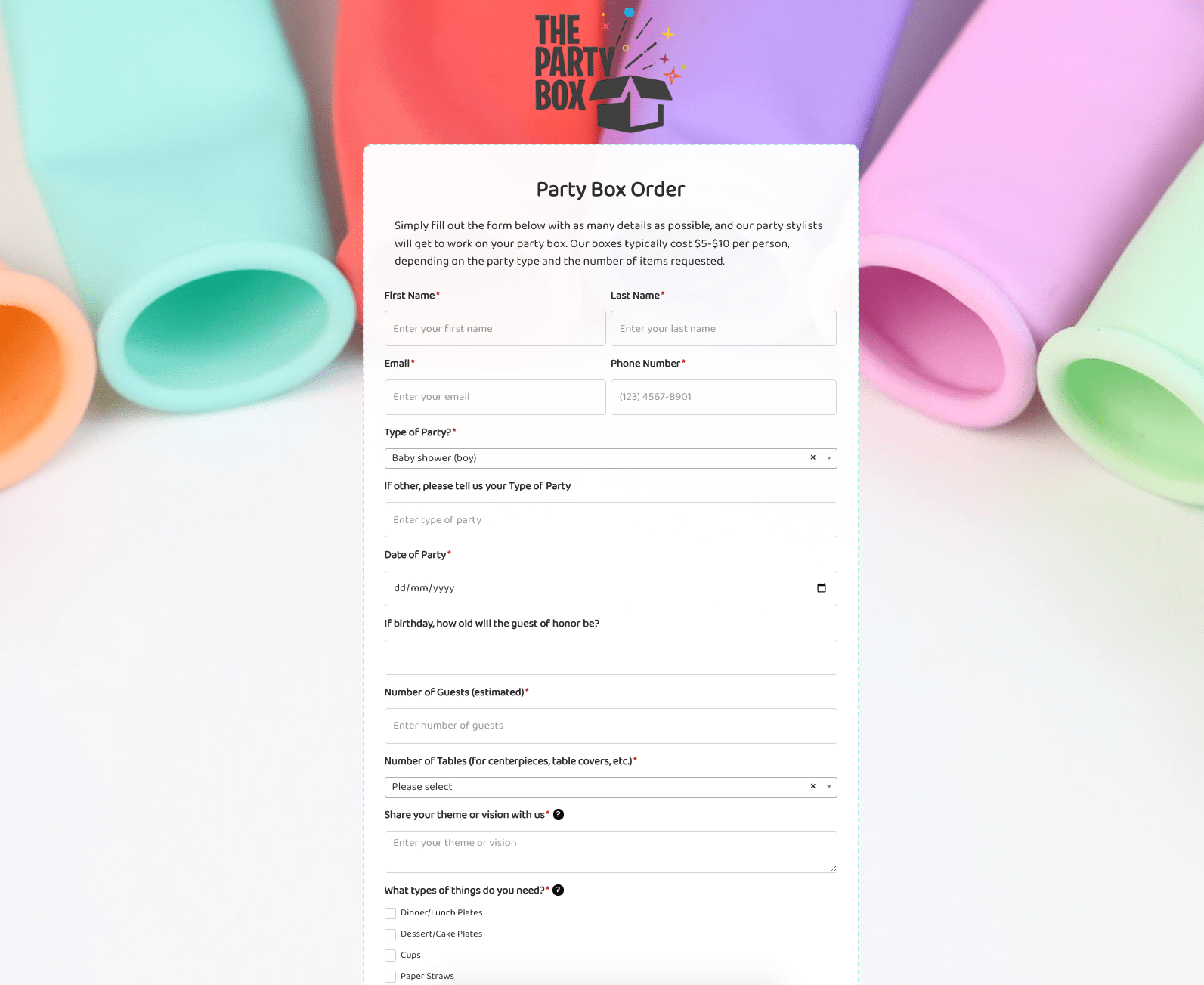 Party Box Order Form
Party Box Order Form
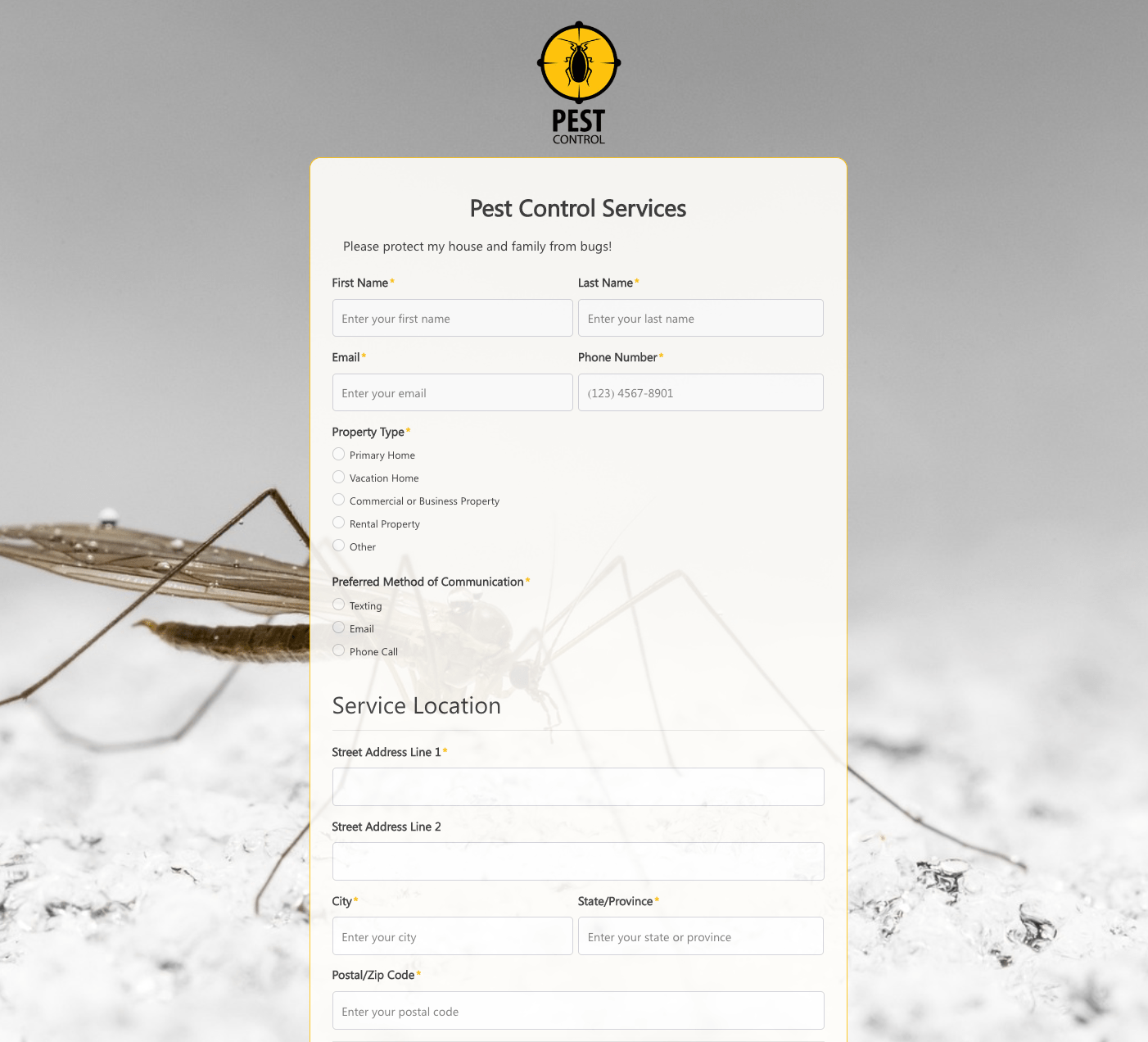 Pest Control Services Form
Pest Control Services Form
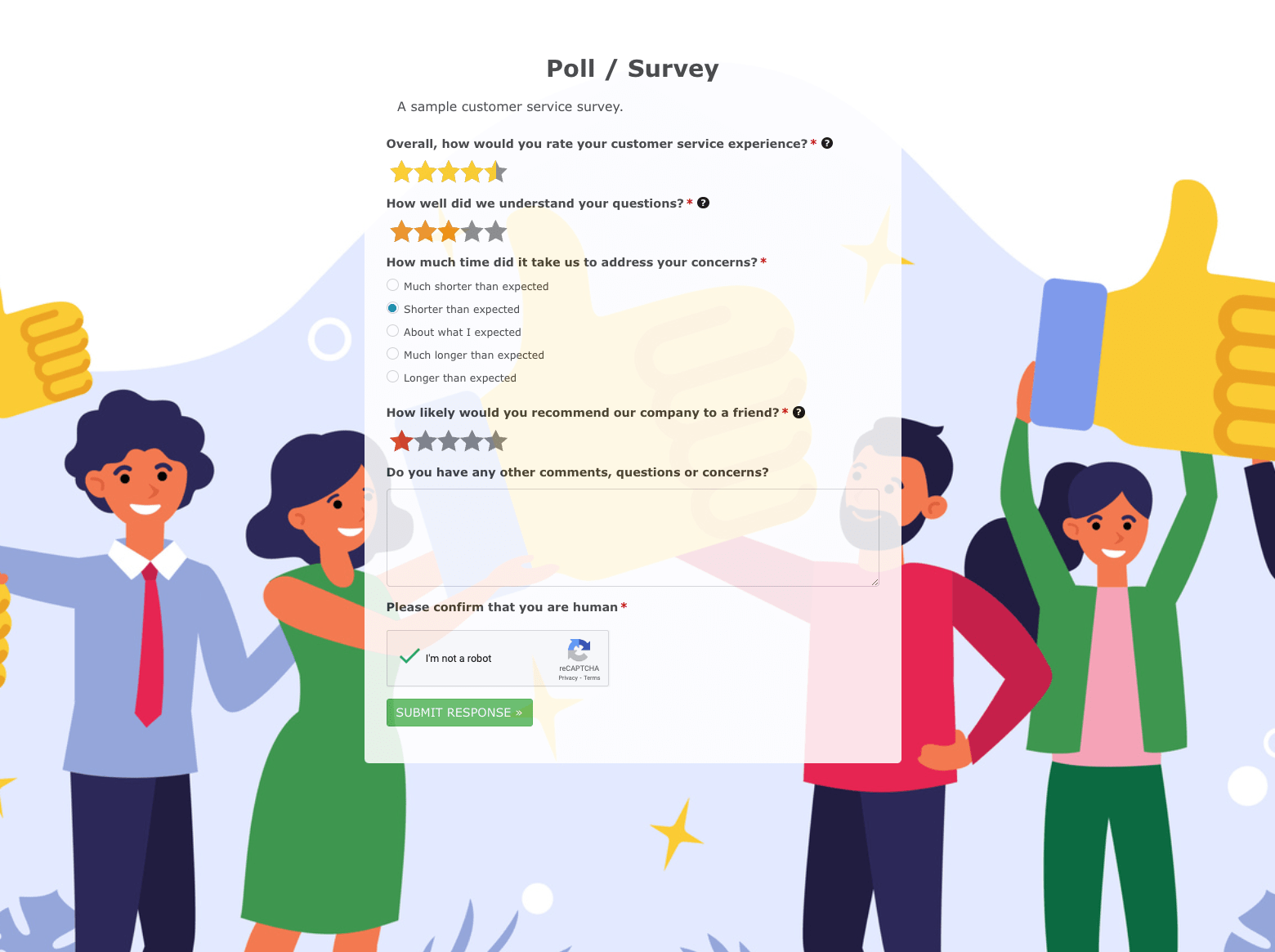 Poll / Survey Form
Poll / Survey Form
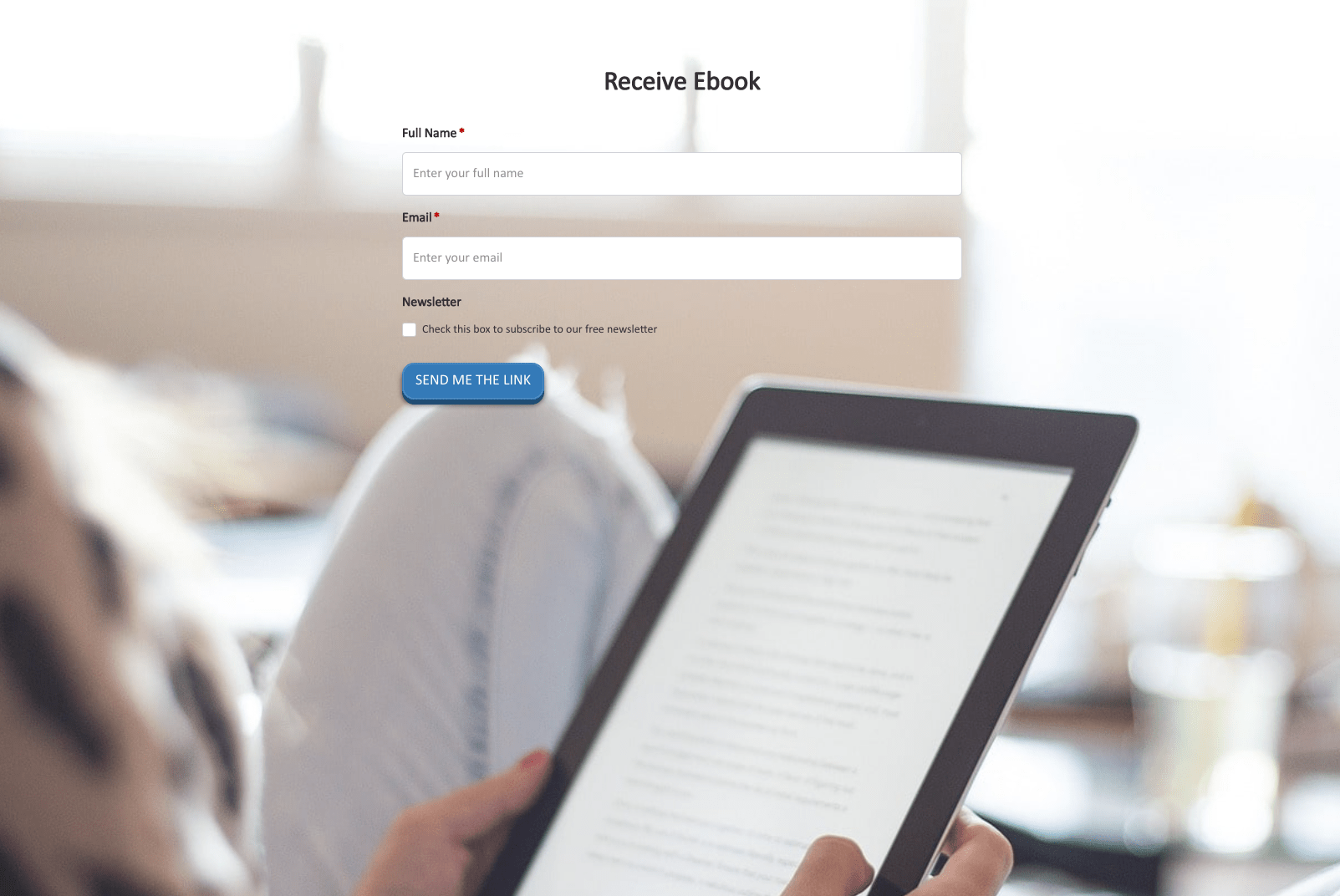 Receive Ebook Form
Receive Ebook Form
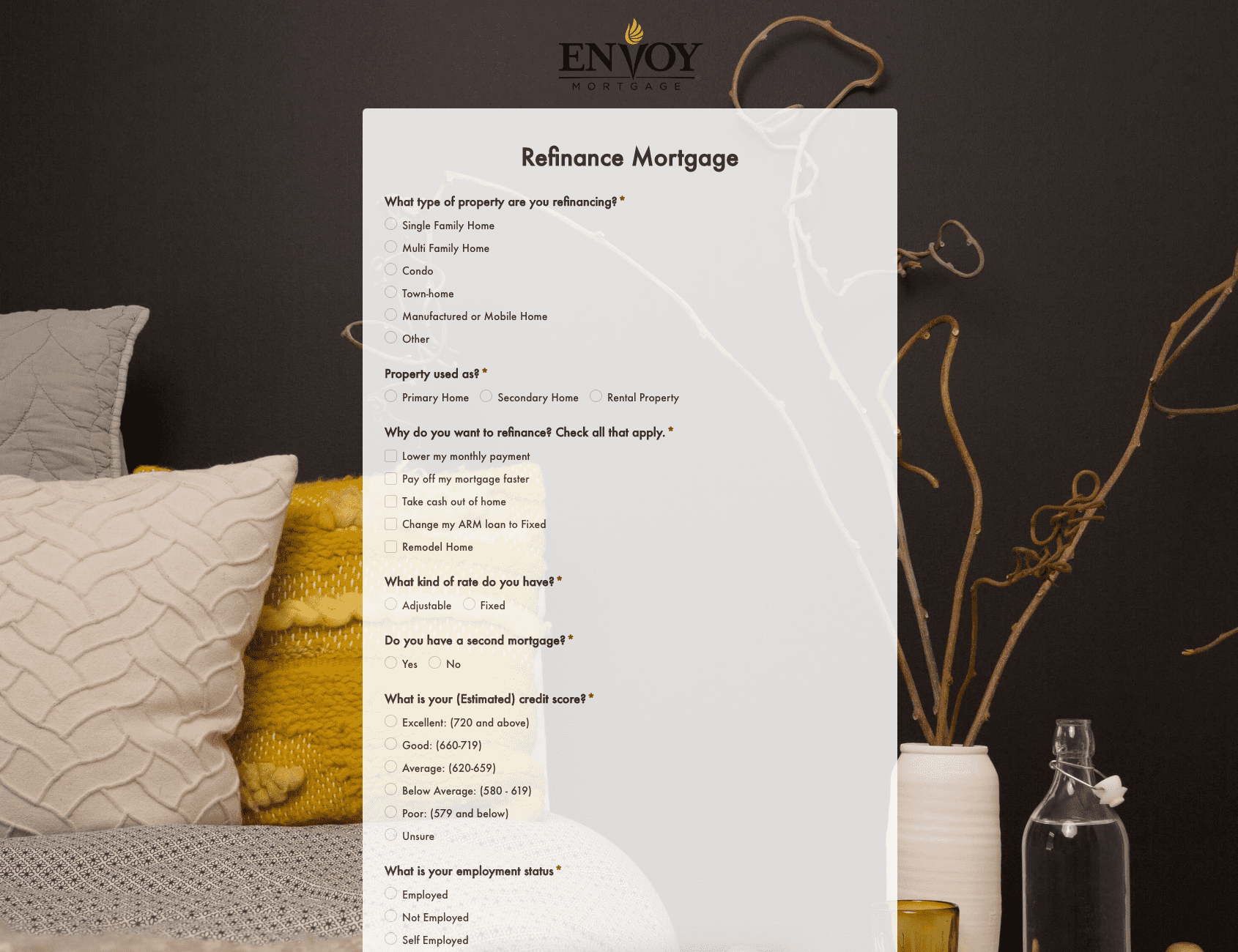 Refinance Mortgage Form
Refinance Mortgage Form
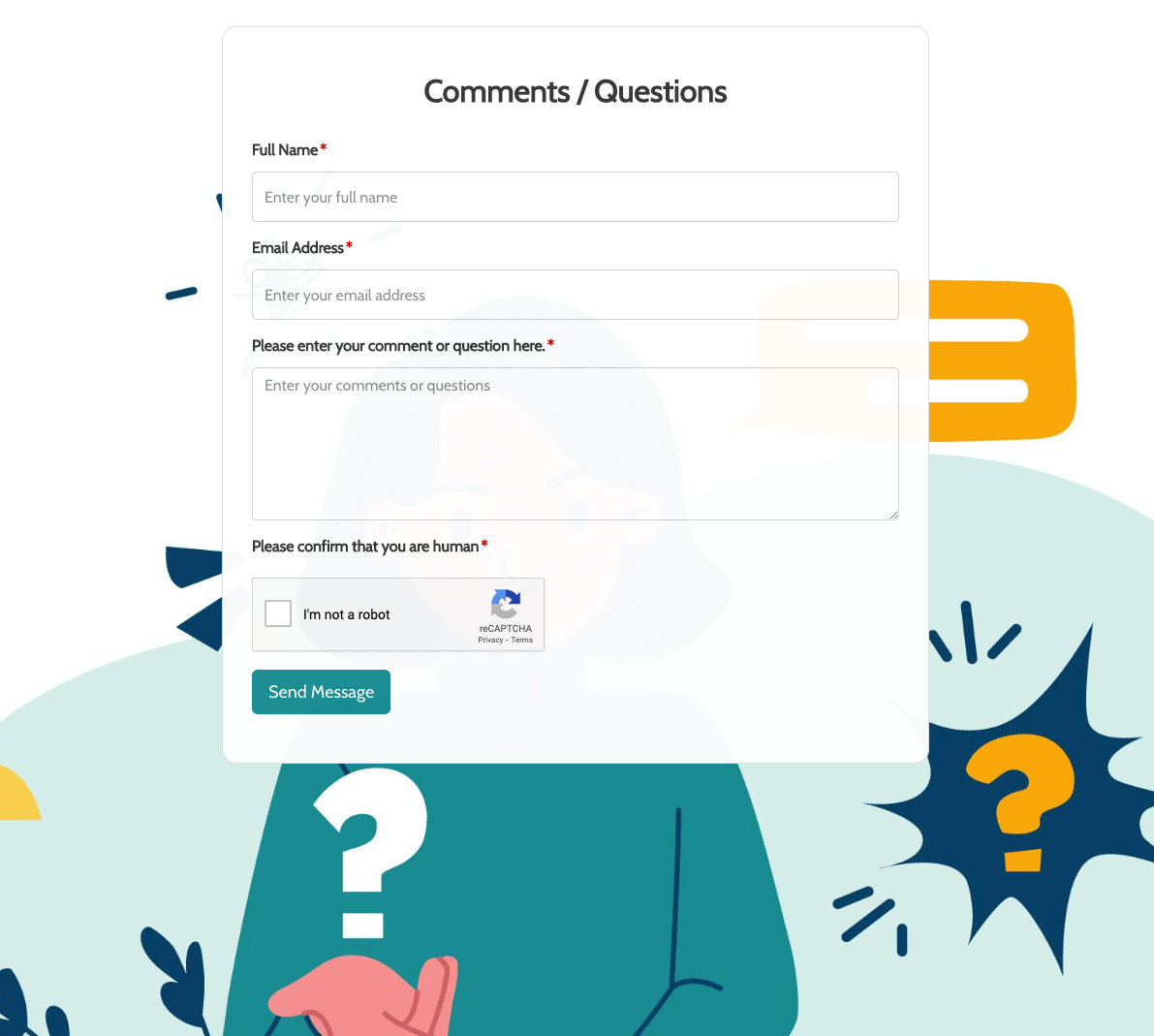 Remarks / Questions Form
Remarks / Questions Form
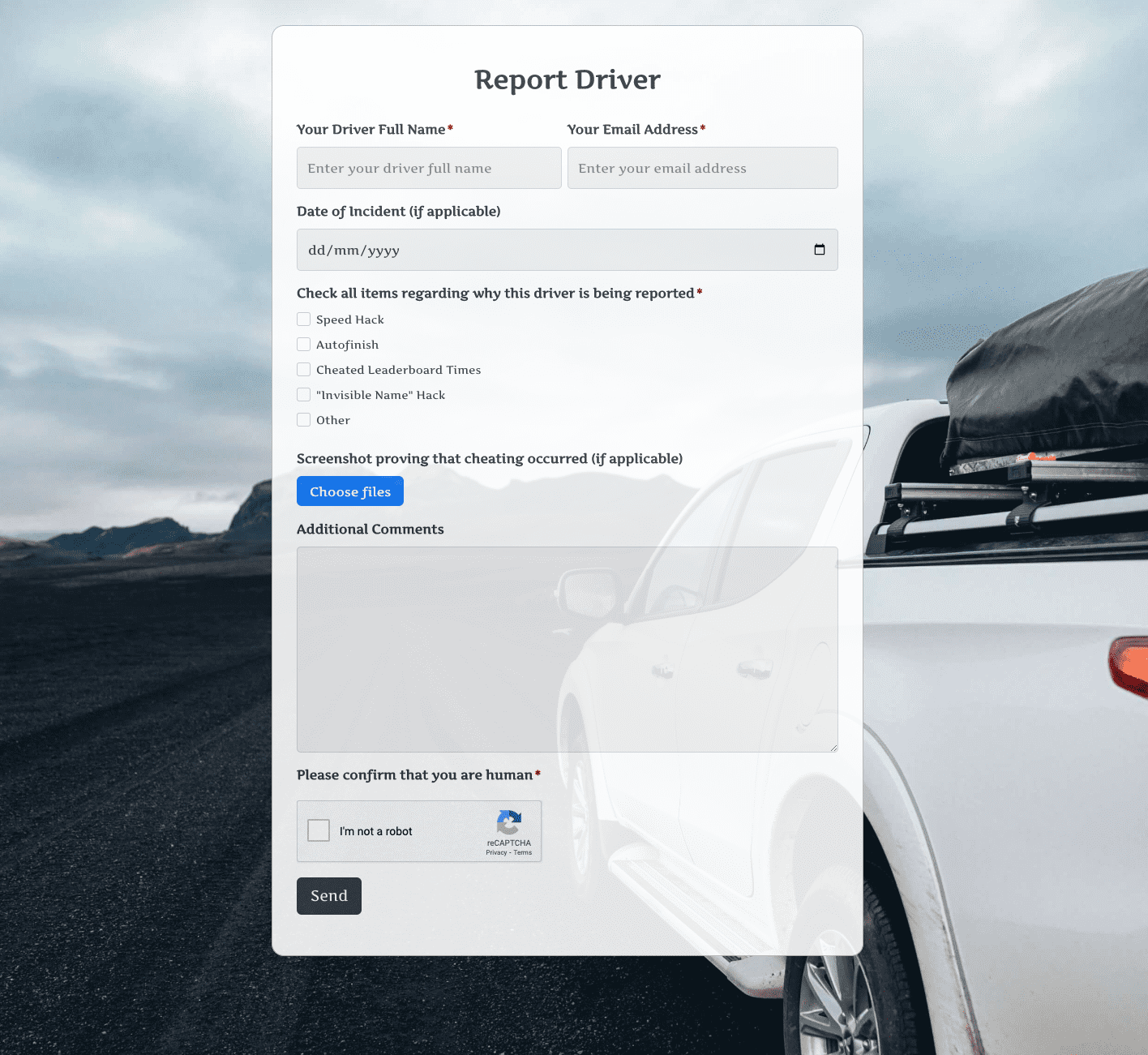 Report Driver Form
Report Driver Form
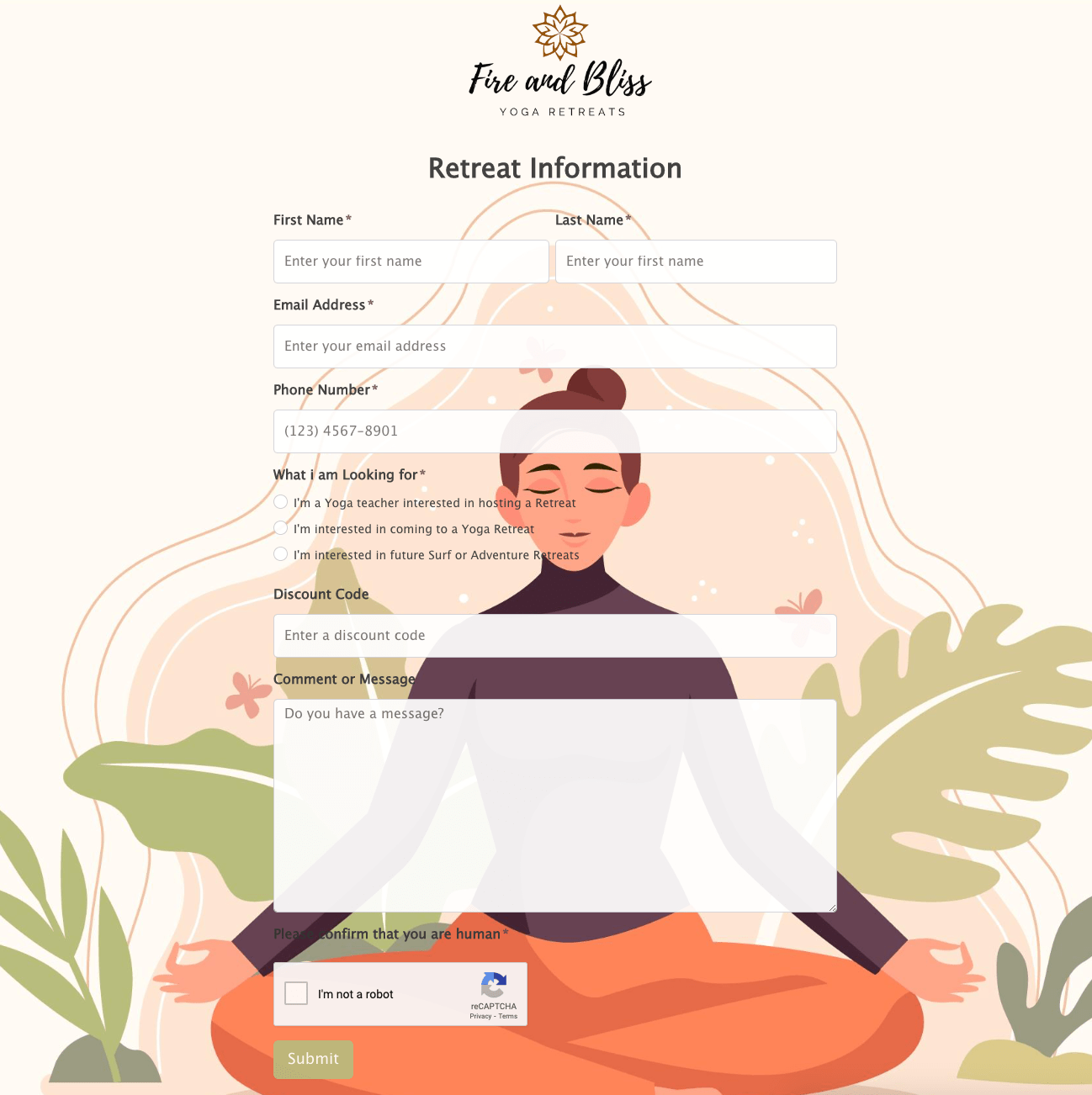 Retreat Information Form
Retreat Information Form
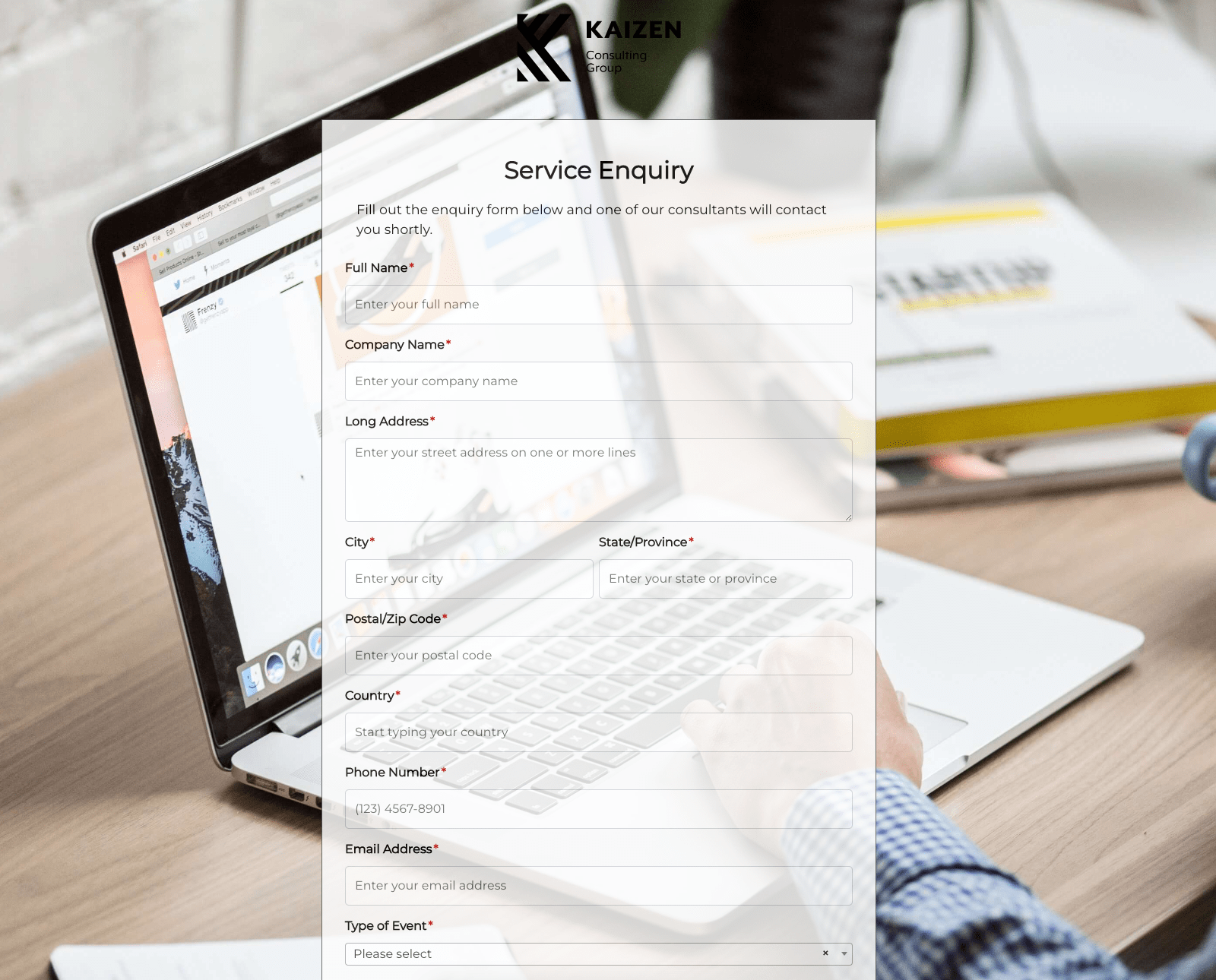 Service Enquiry Form
Service Enquiry Form
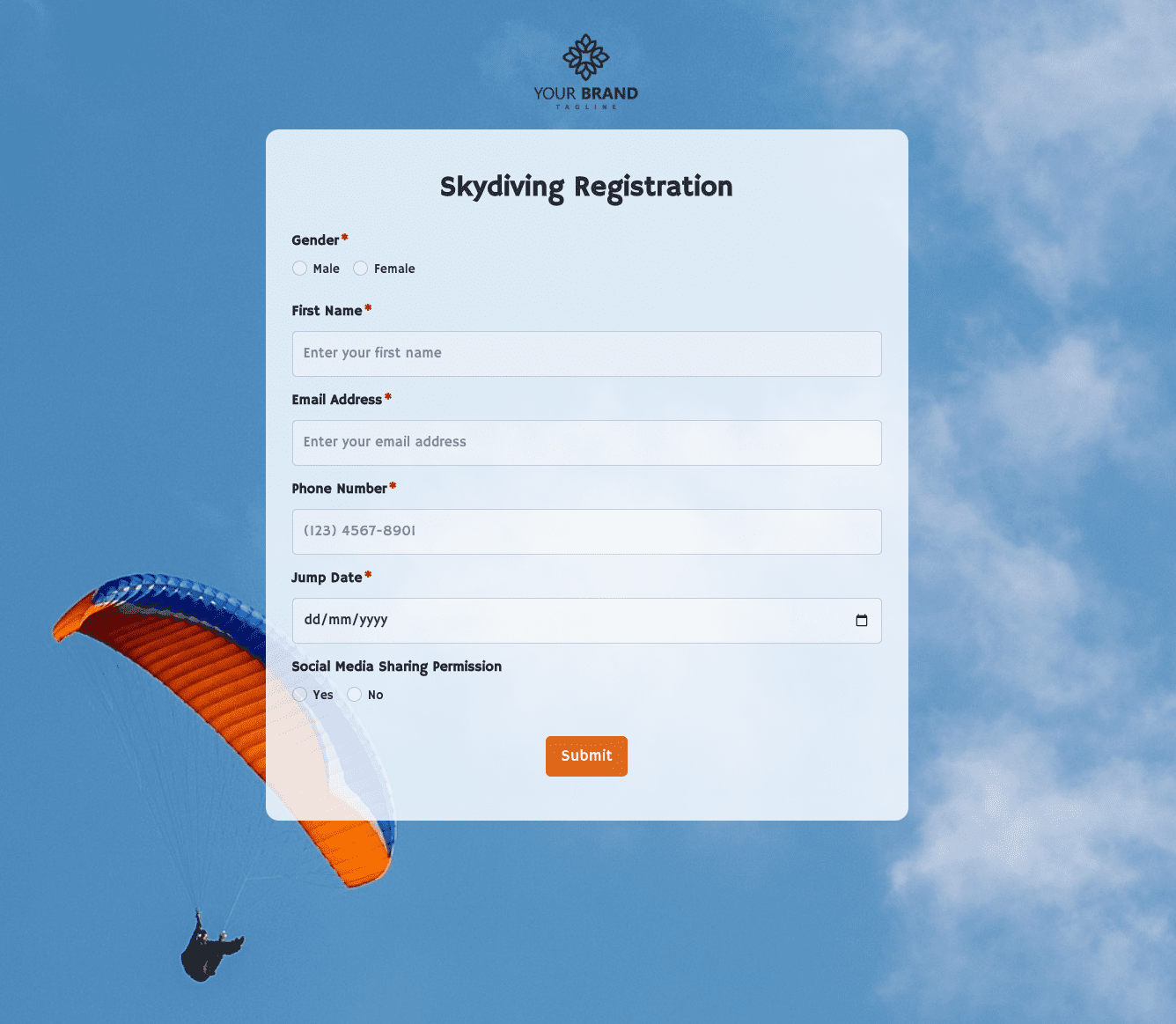 Skydiving Registration Form
Skydiving Registration Form
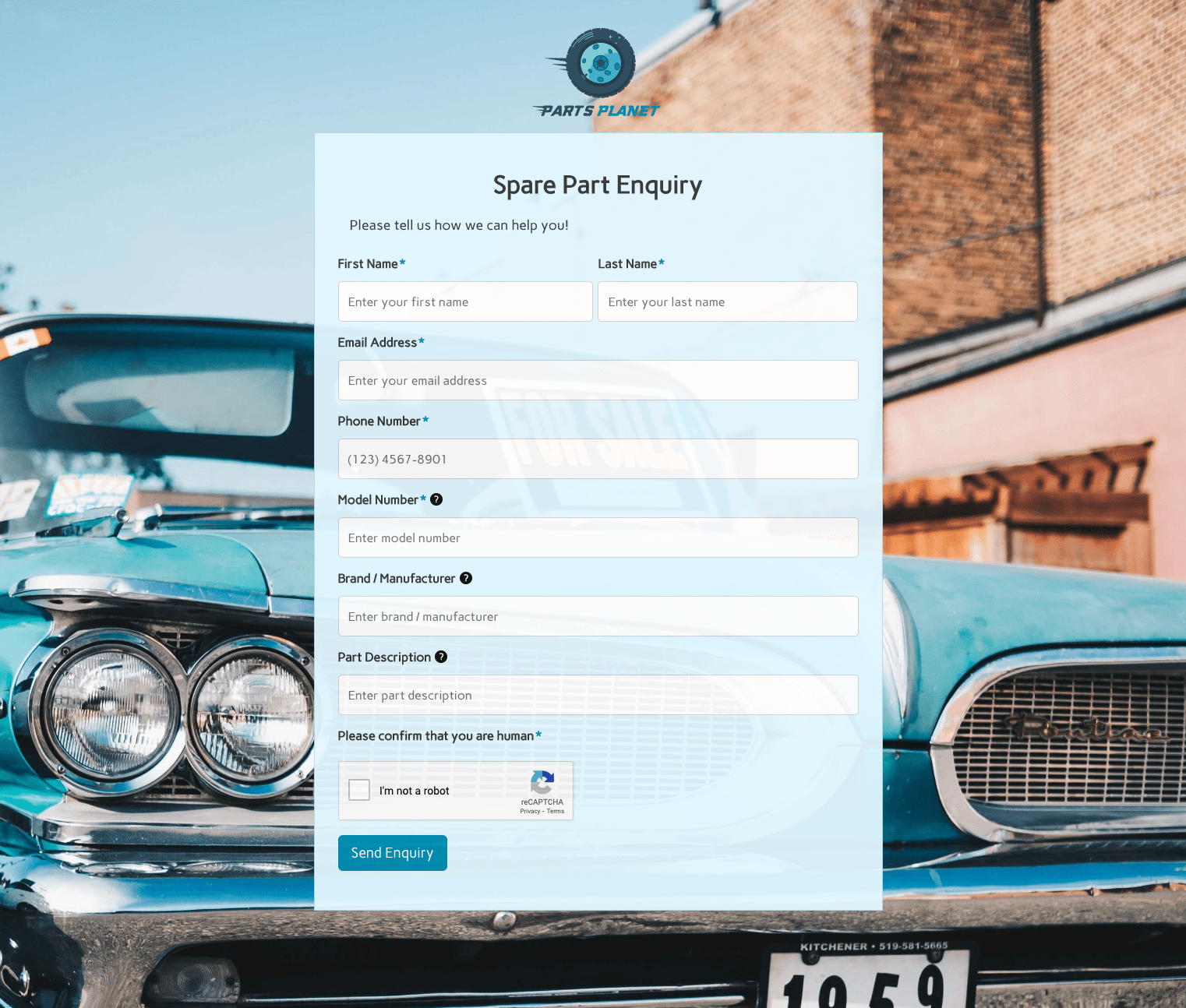 Spare Part Enquiry Form
Spare Part Enquiry Form
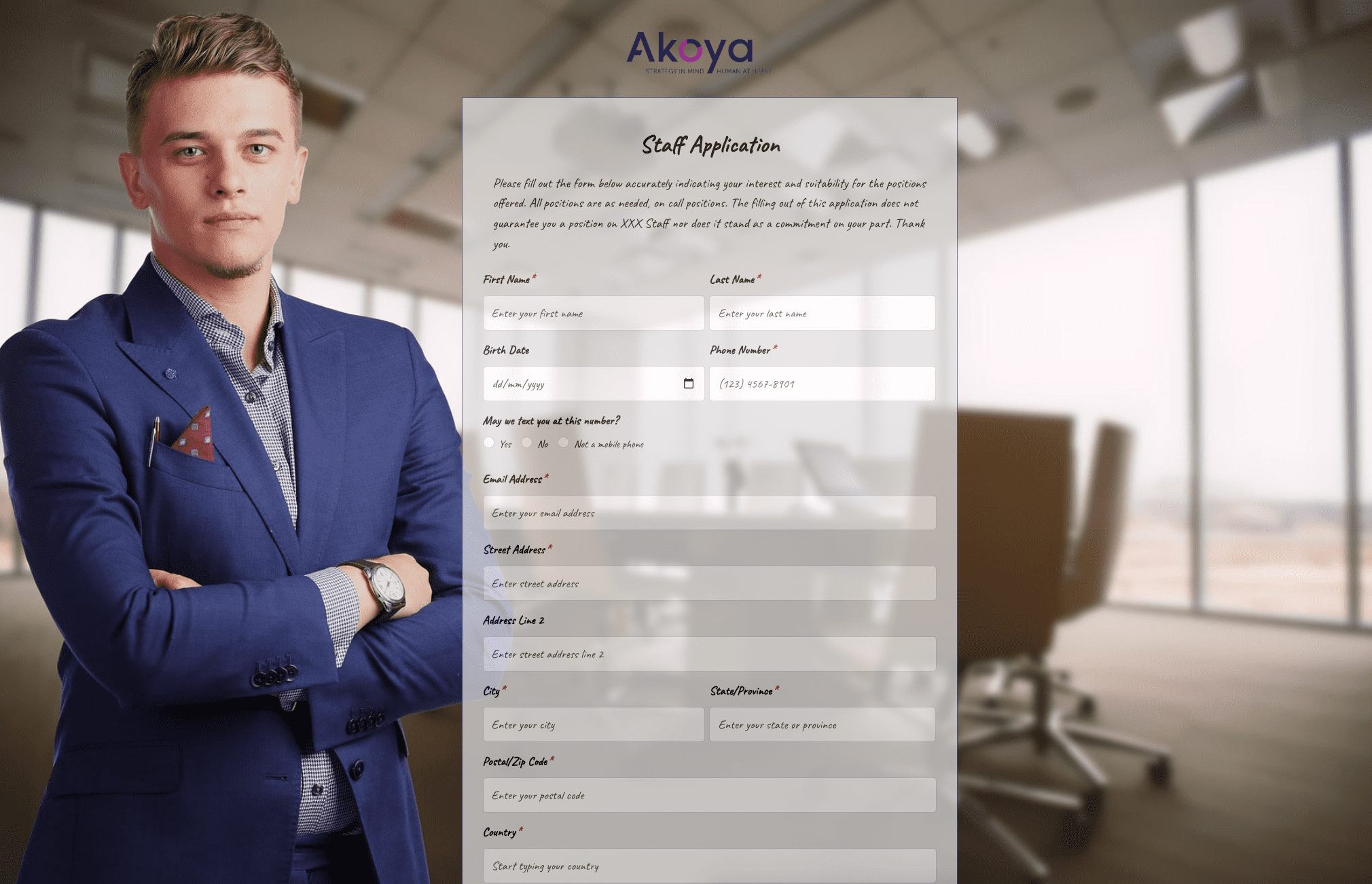 Staff Application Form
Staff Application Form
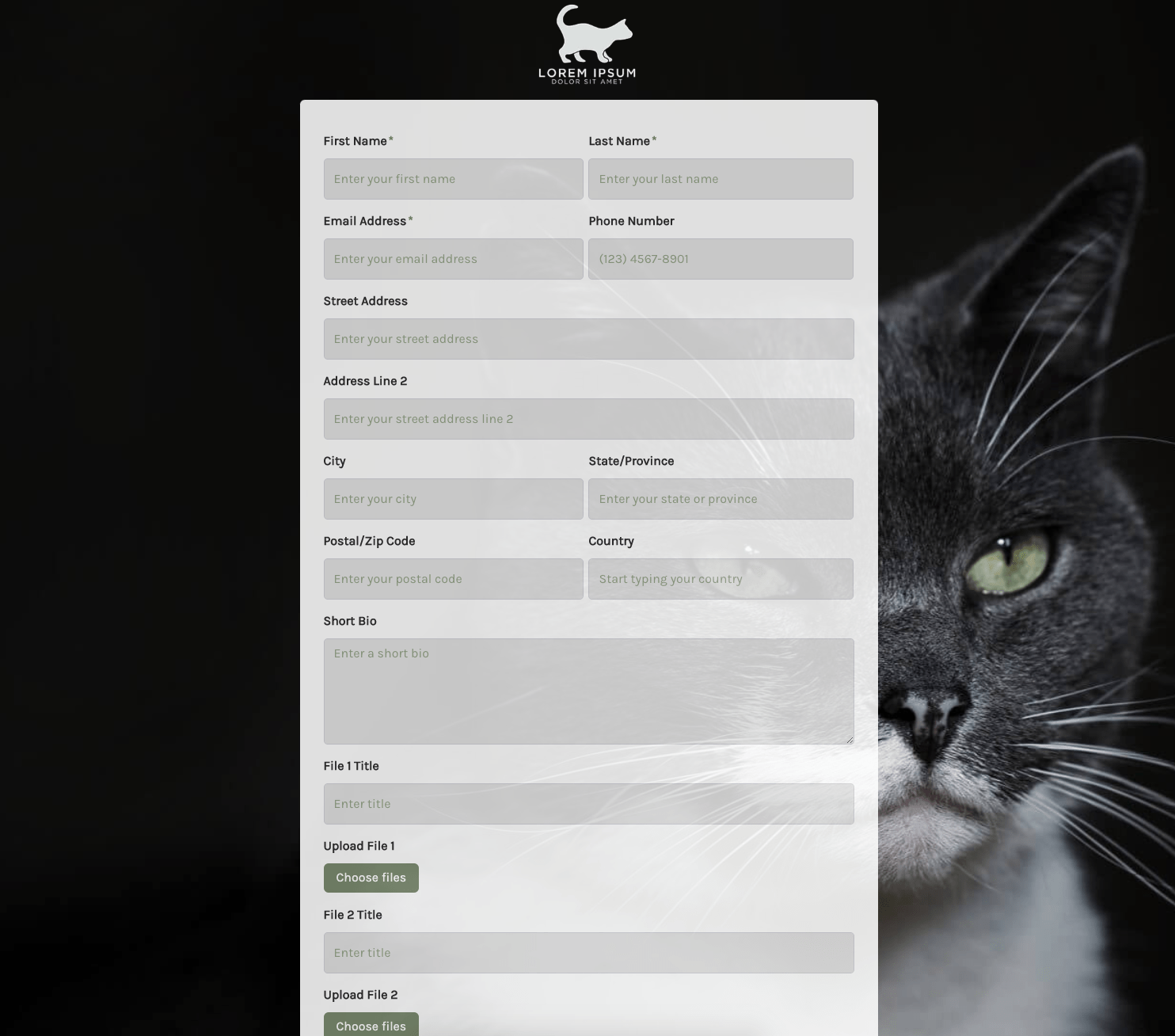 Submission Form
Submission Form
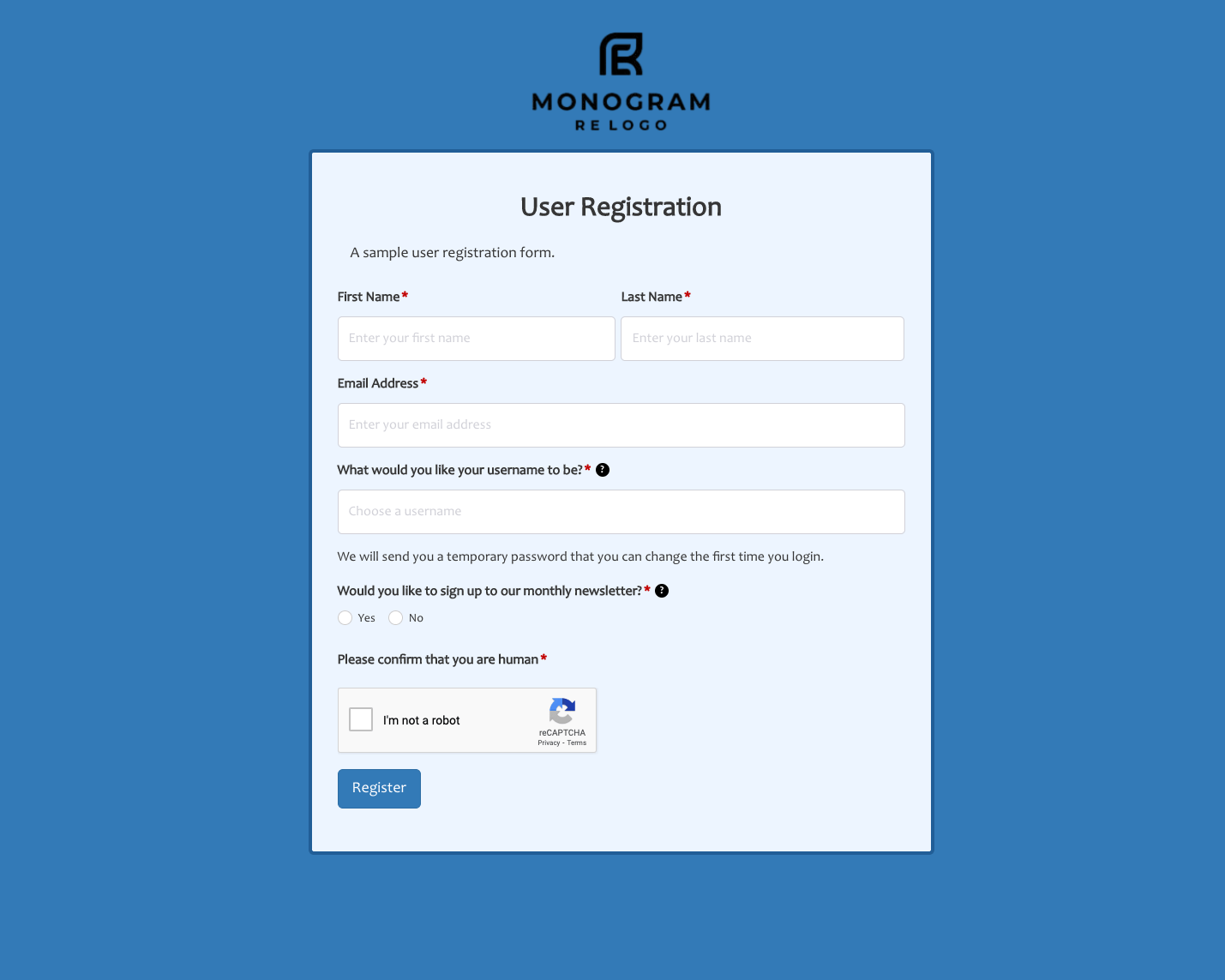 User Registration Form
User Registration Form
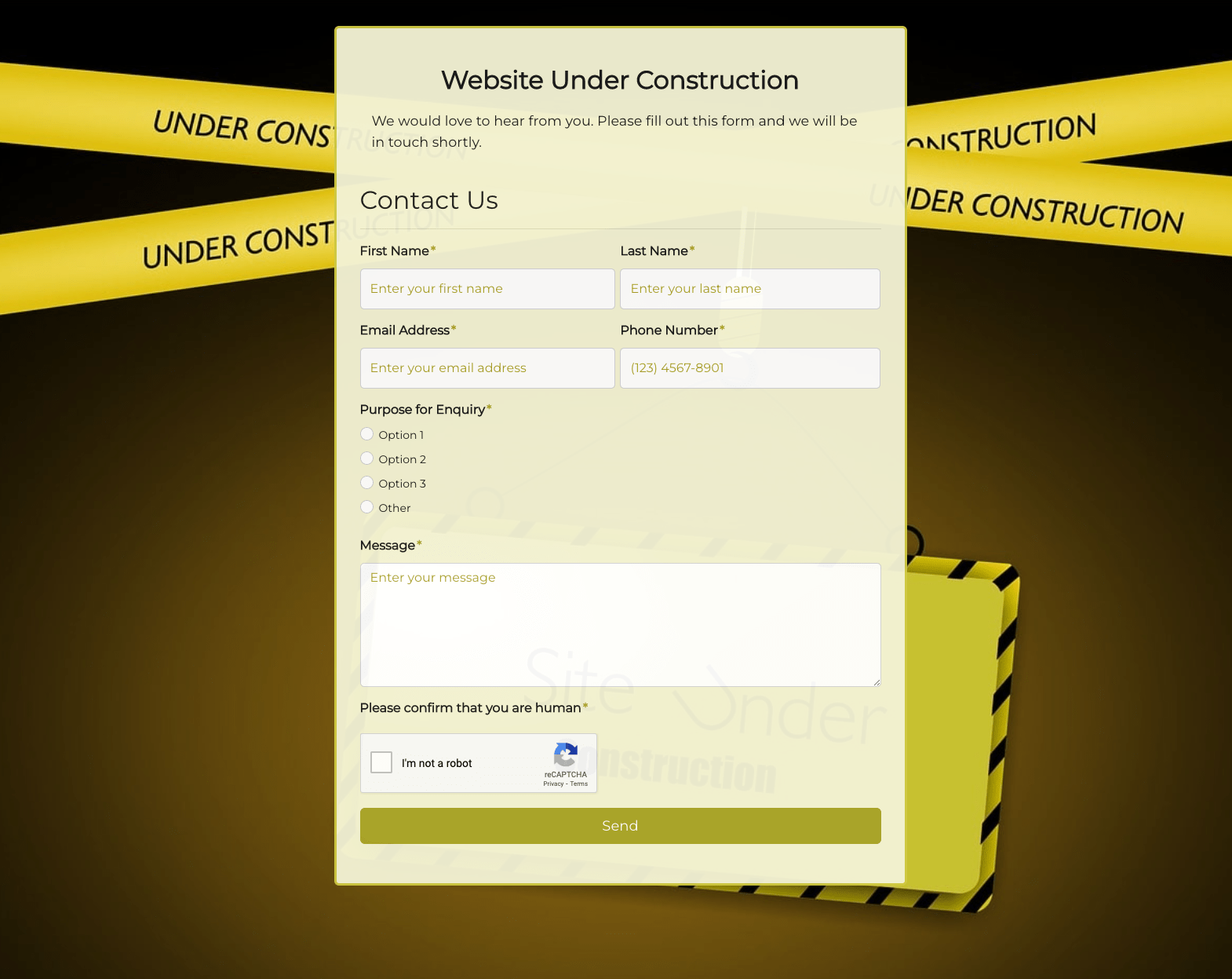 Website Under Construction Form
Website Under Construction Form
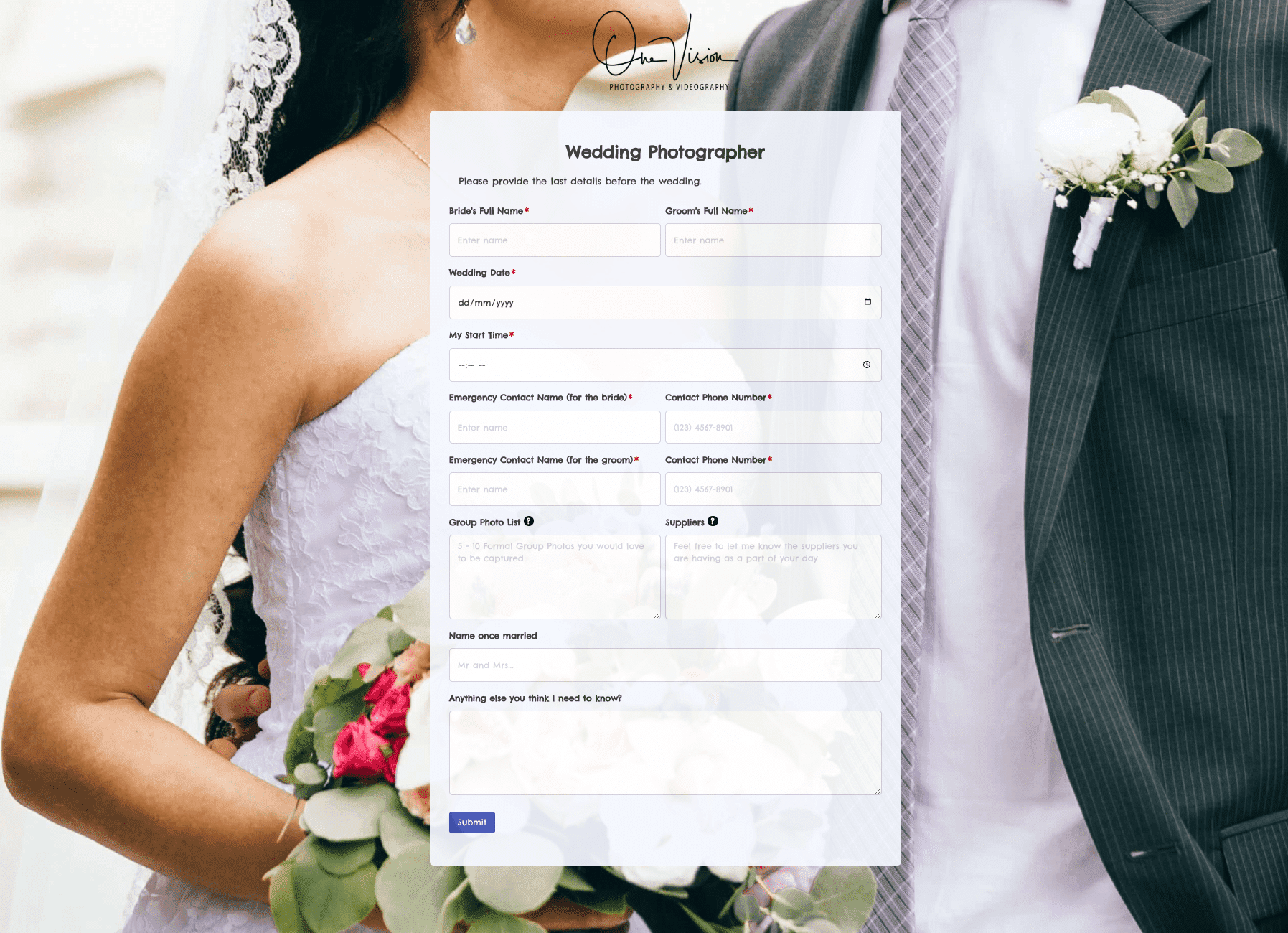 Wedding Photographer Form
Wedding Photographer Form
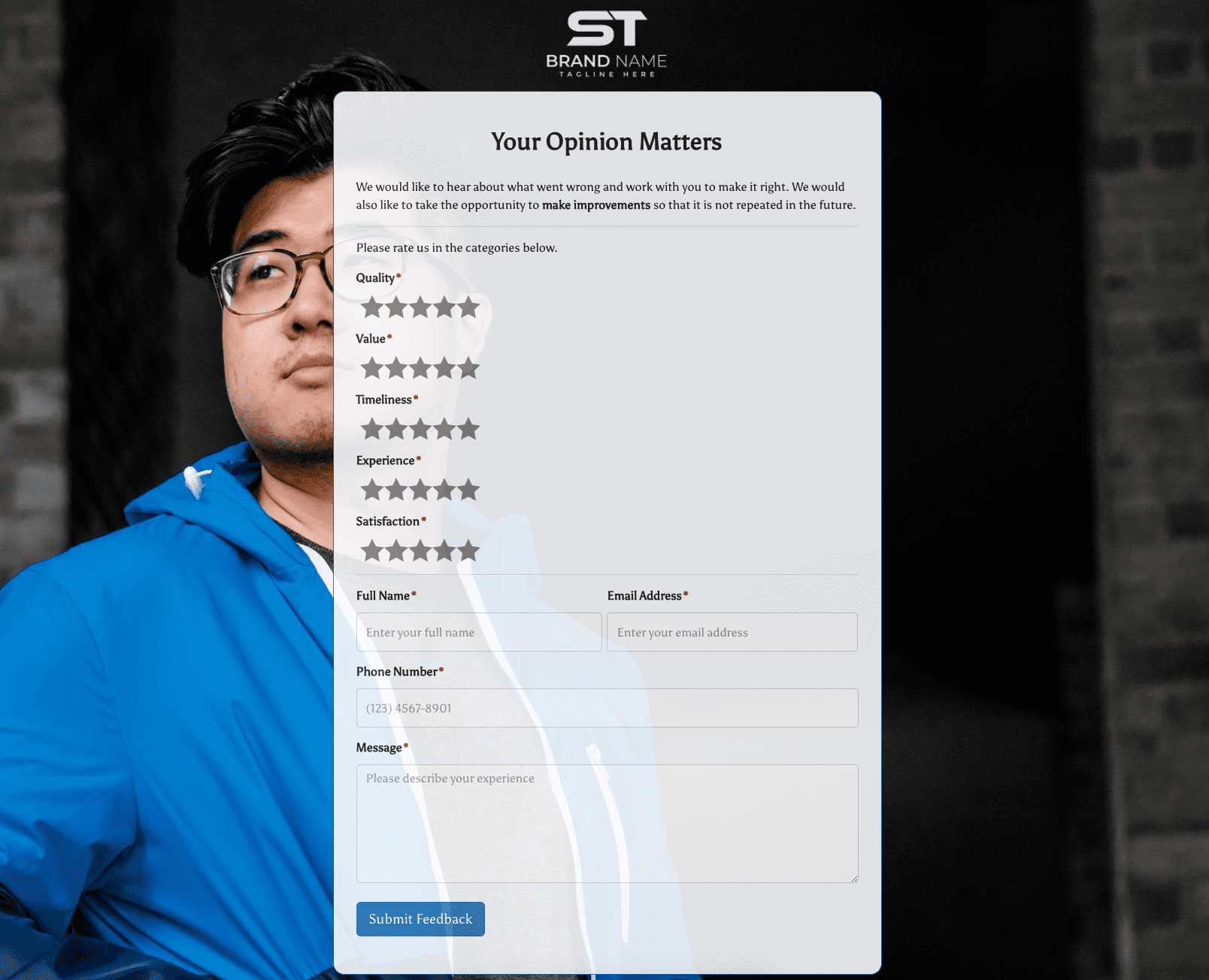 Your Opinion Matters Form
Your Opinion Matters Form












.jpeg)


